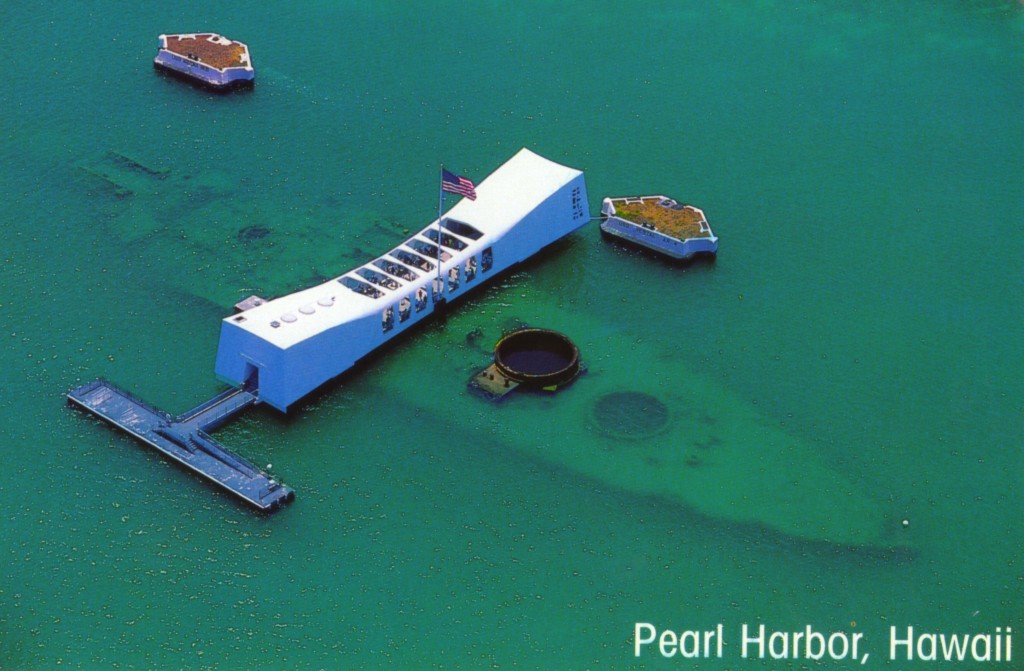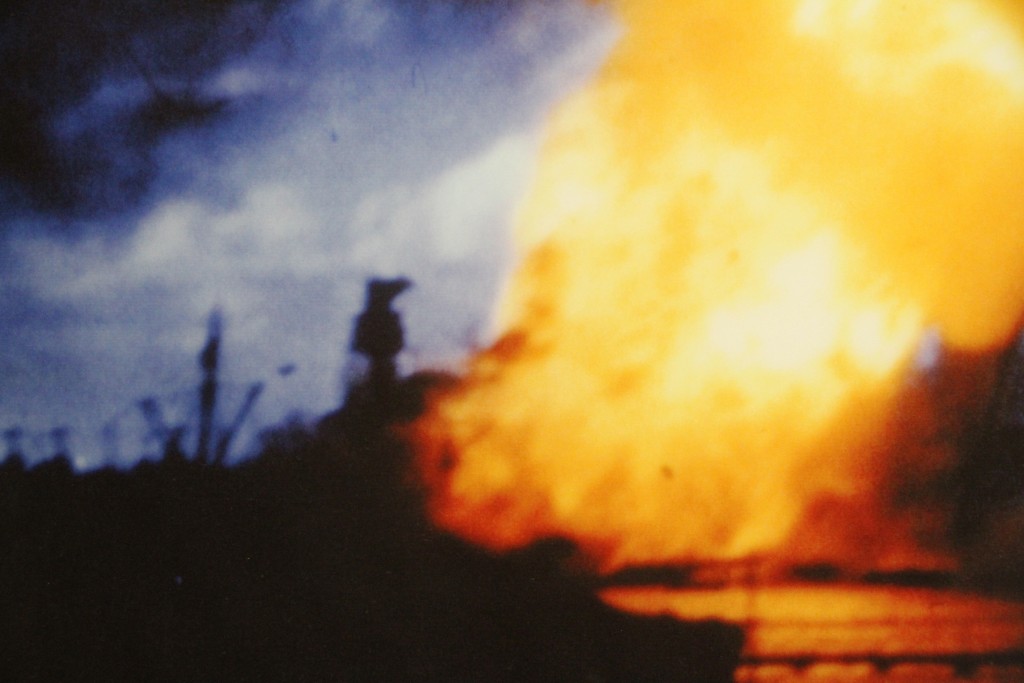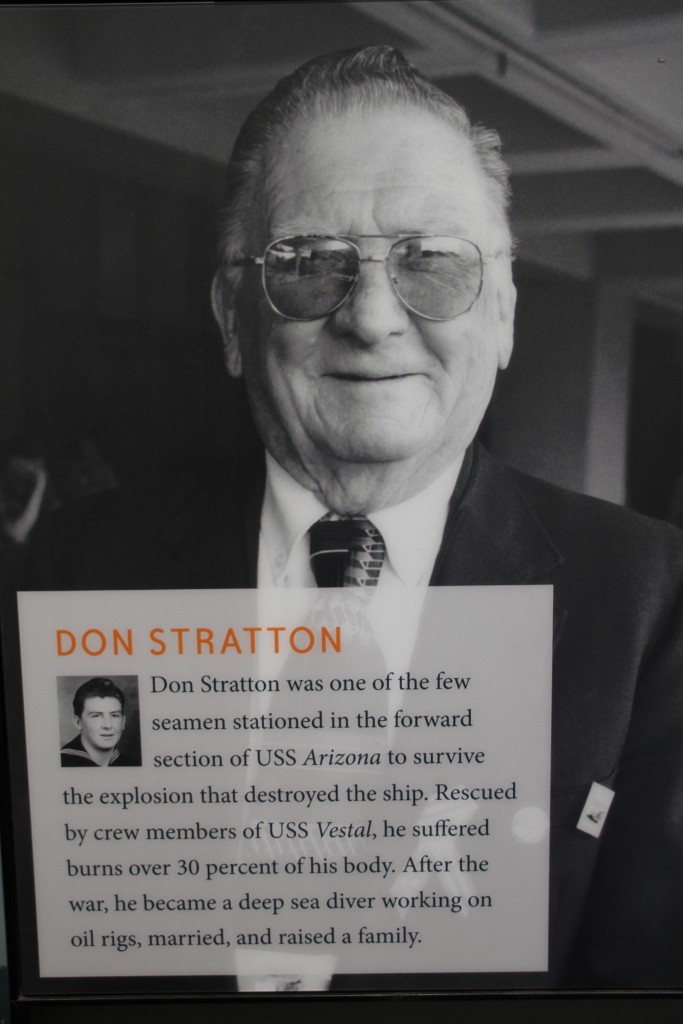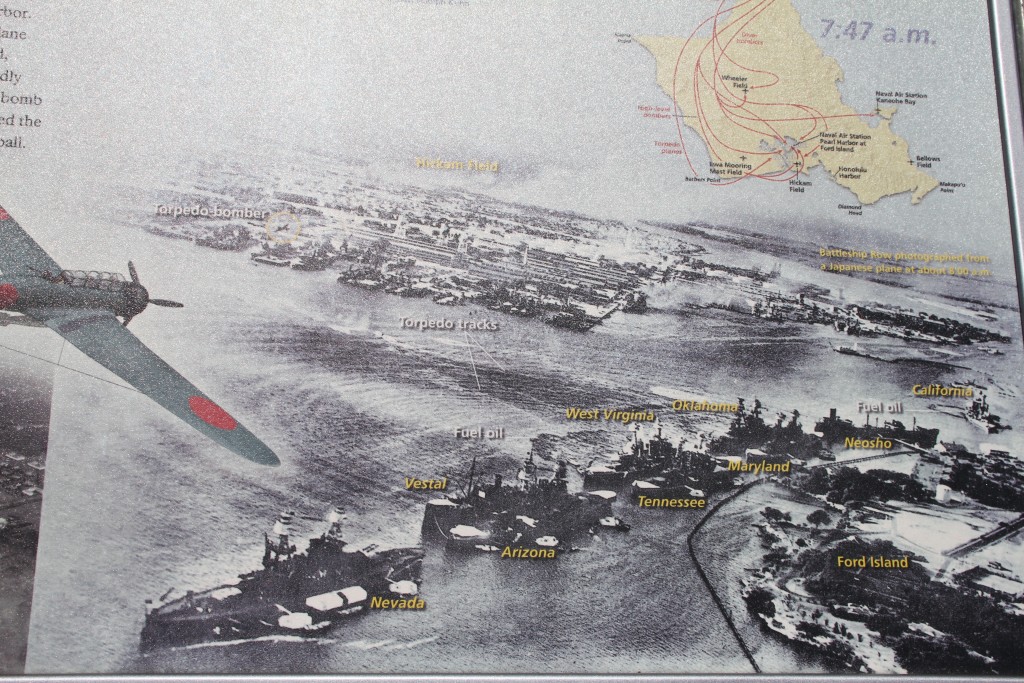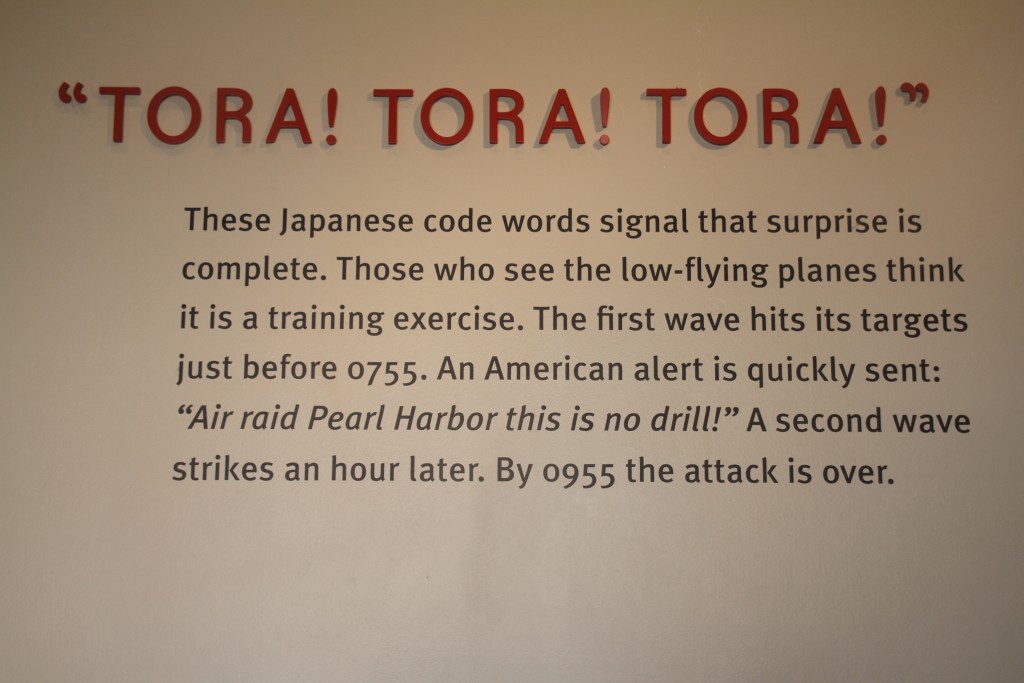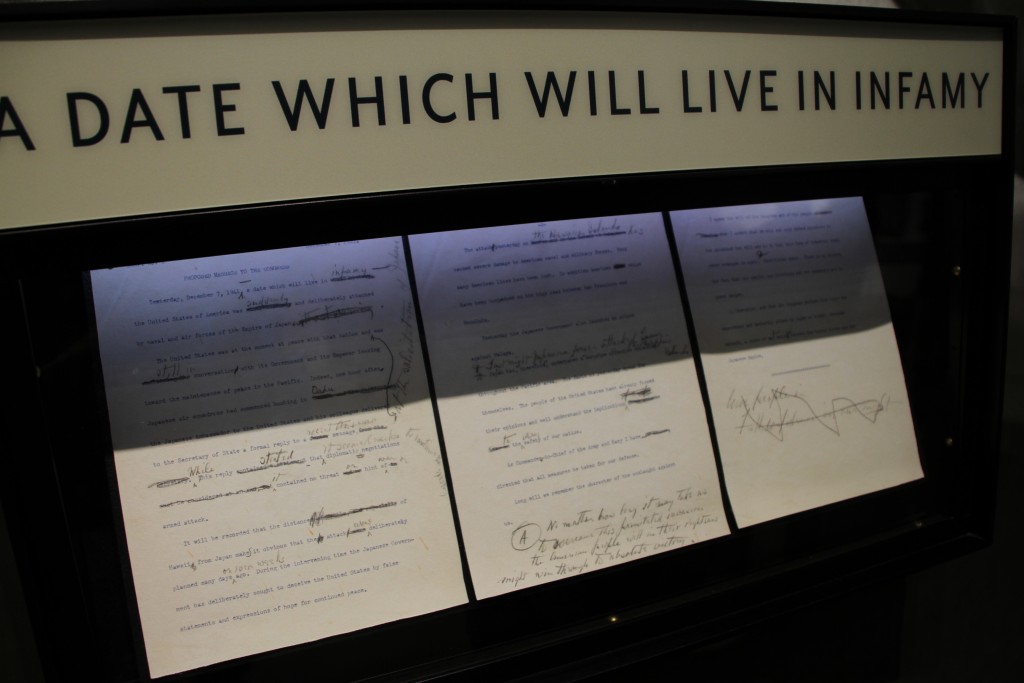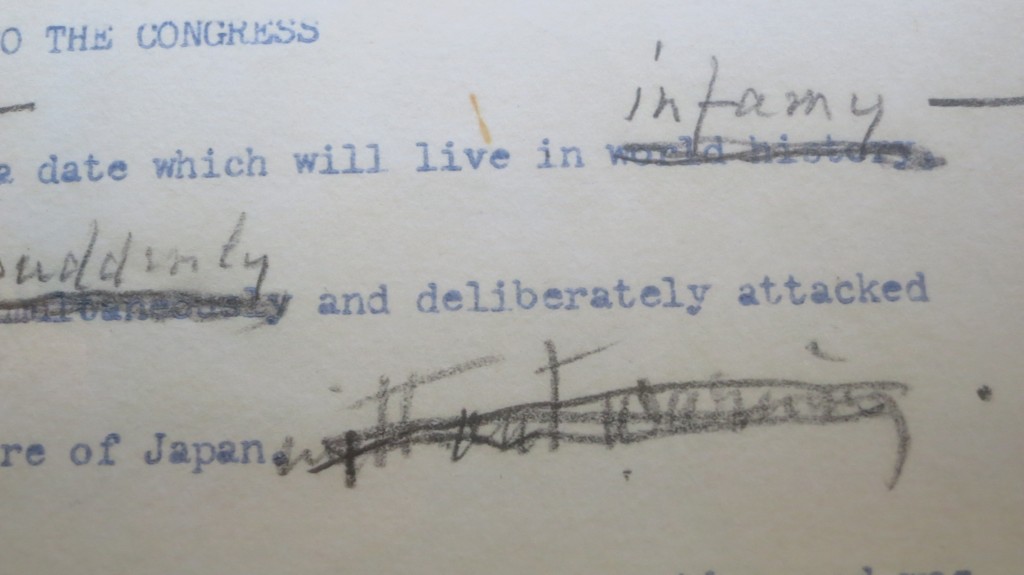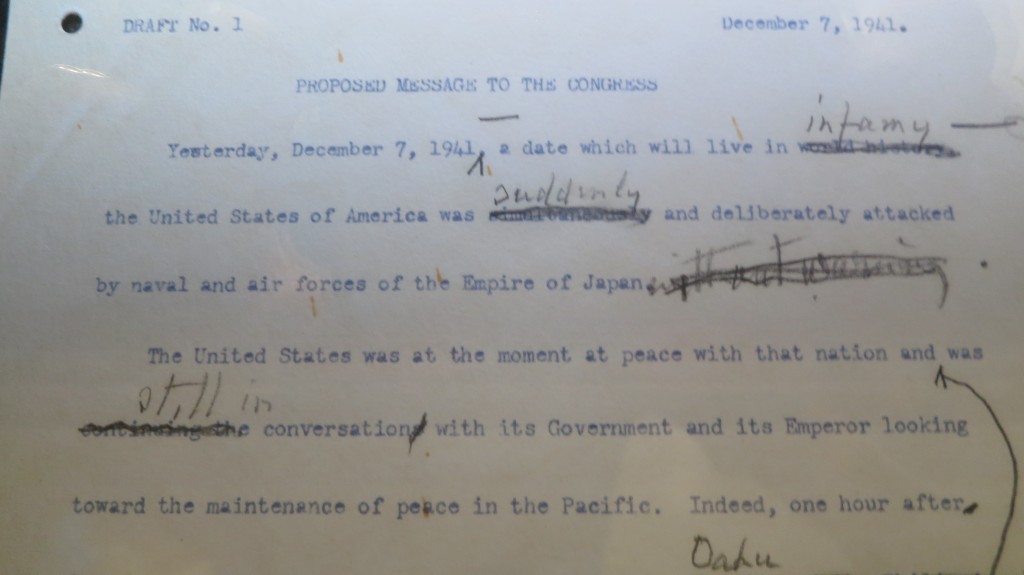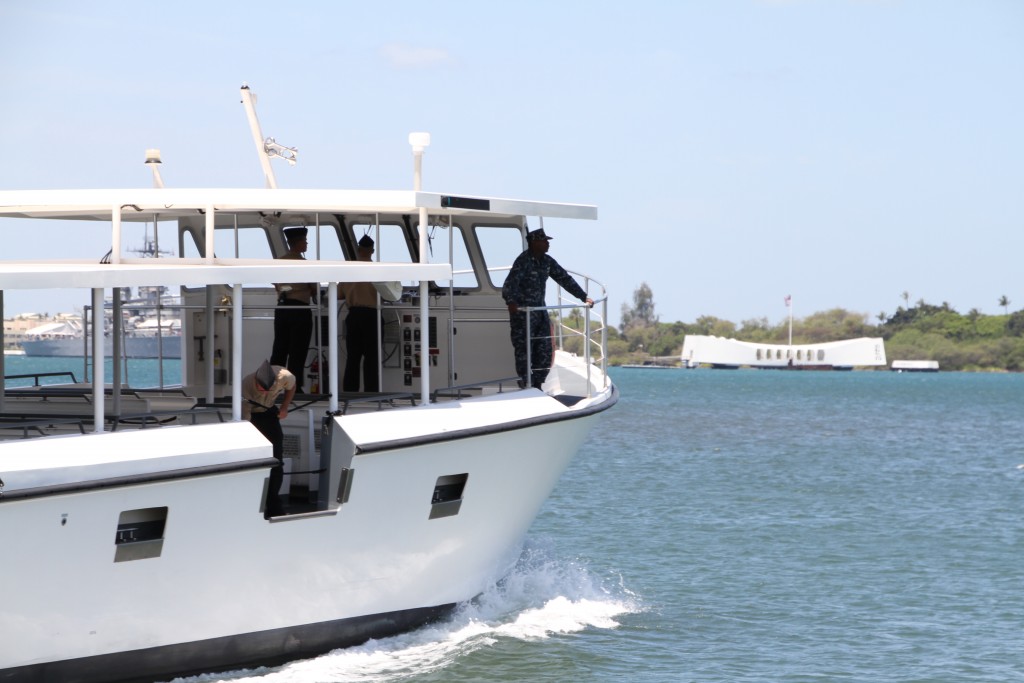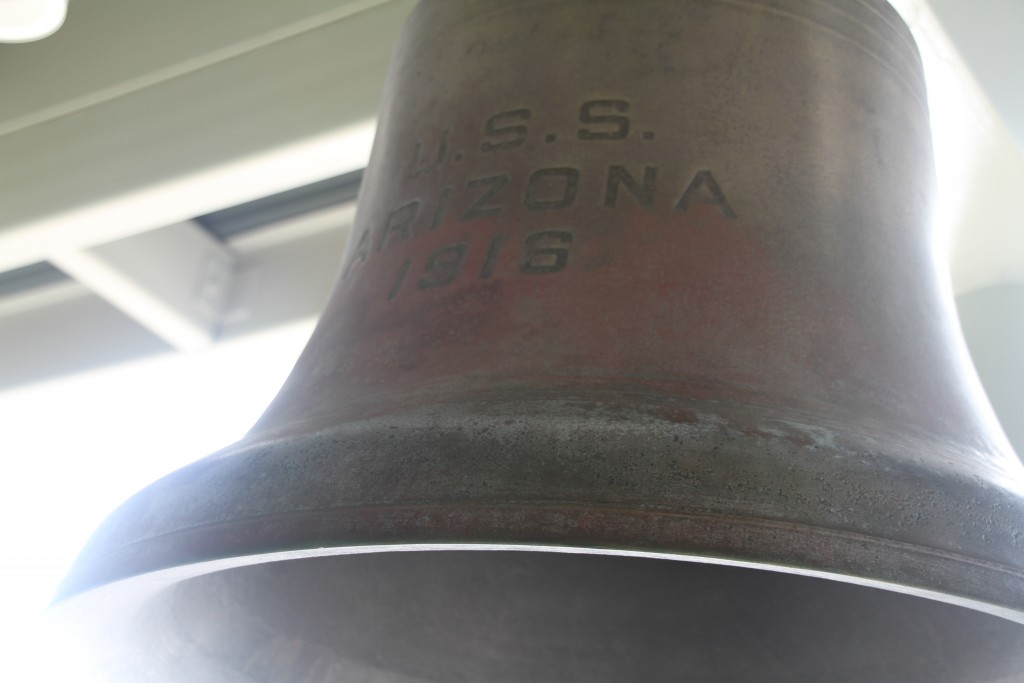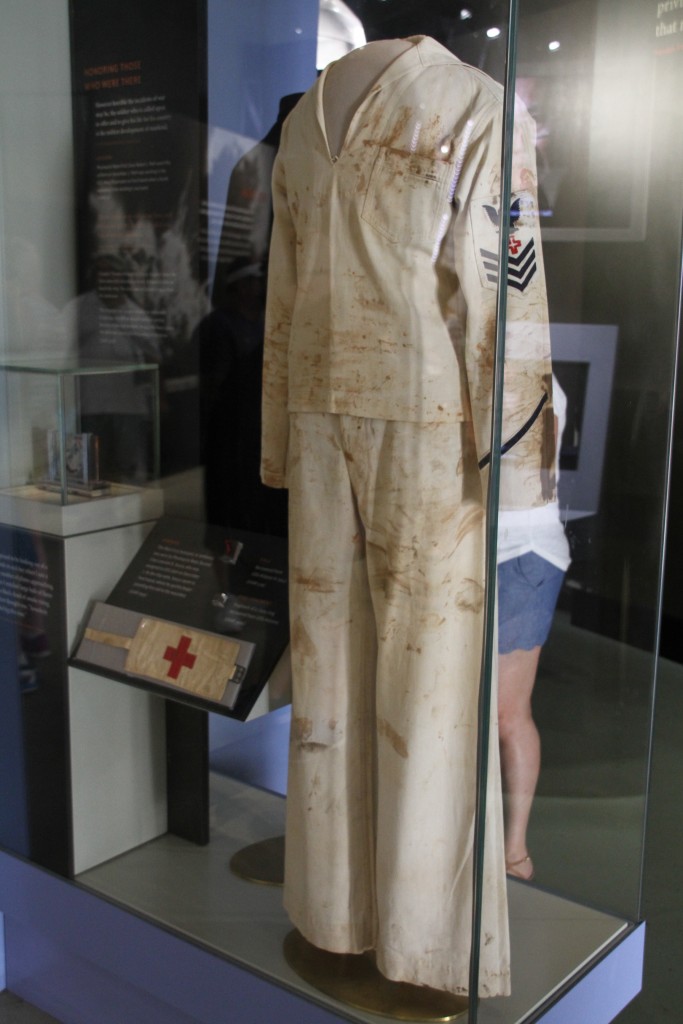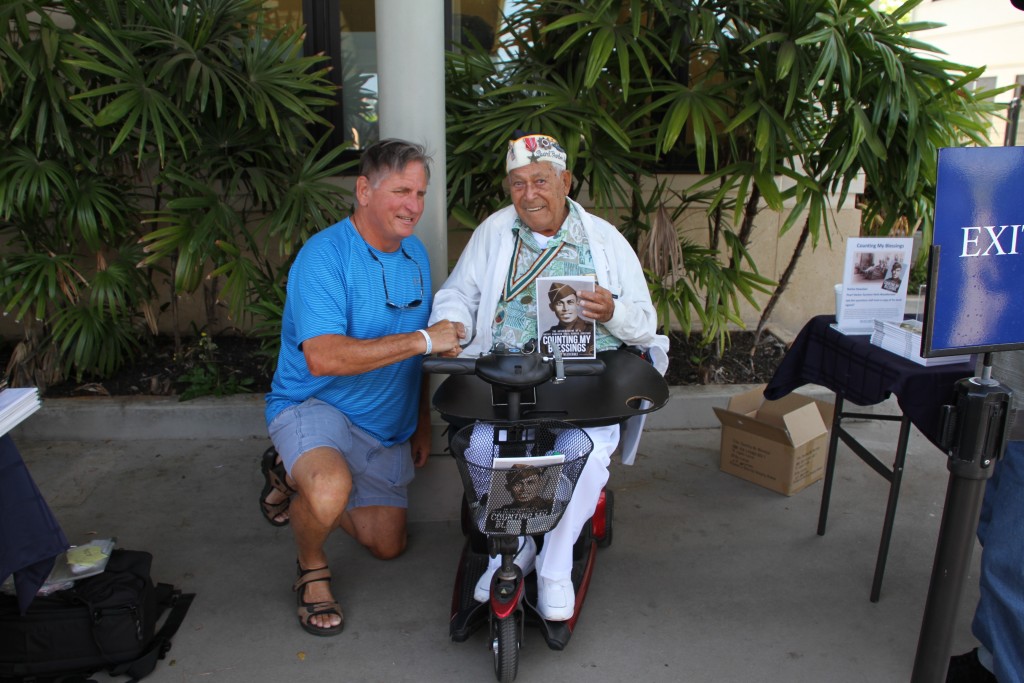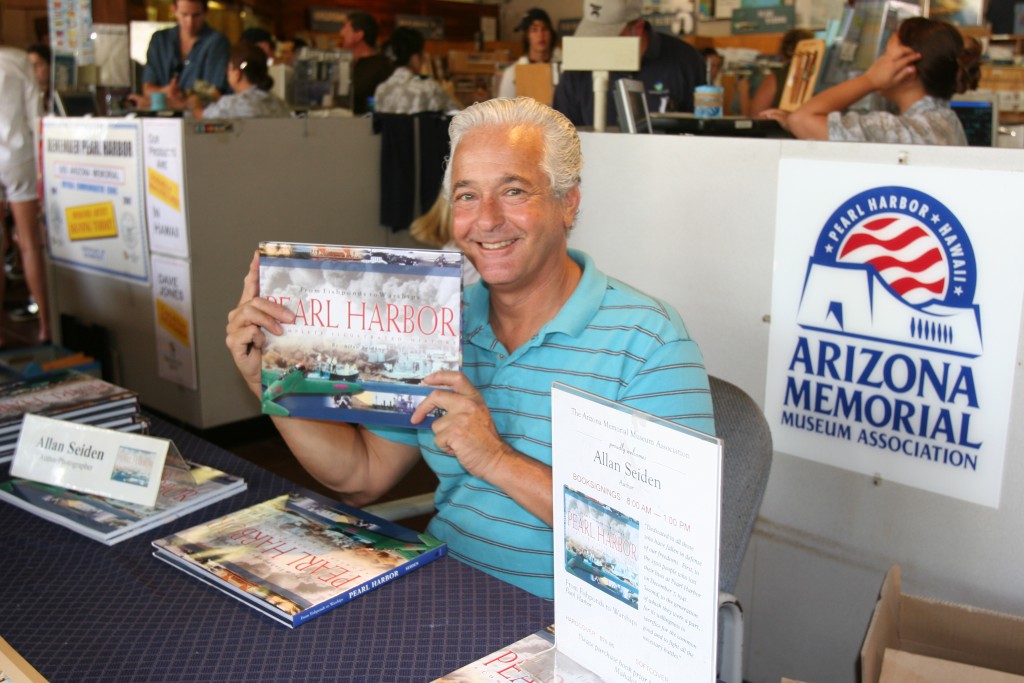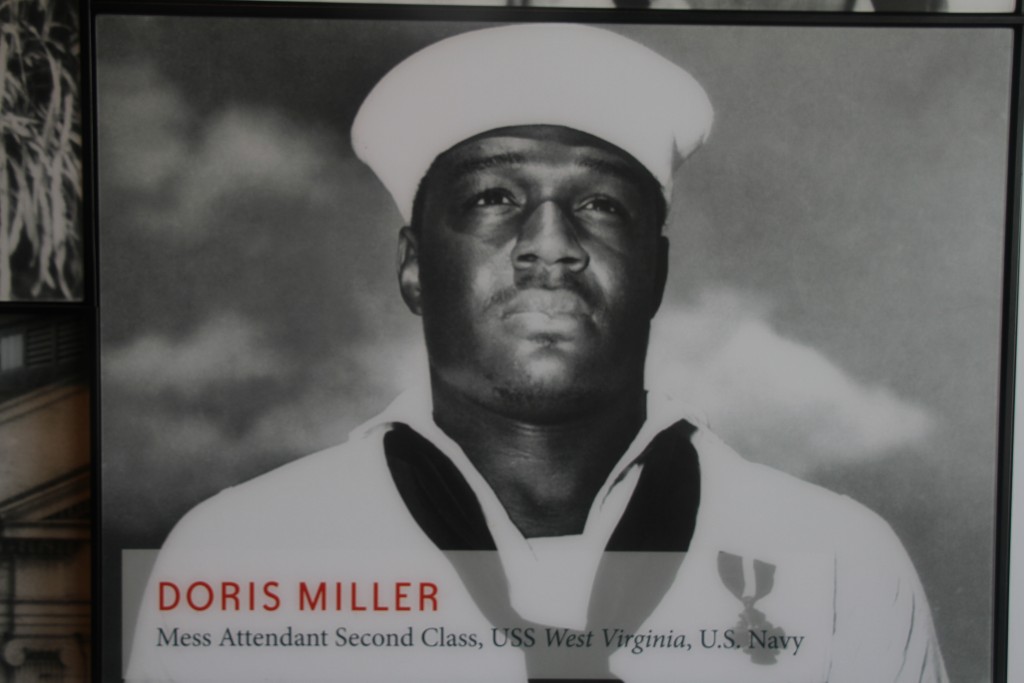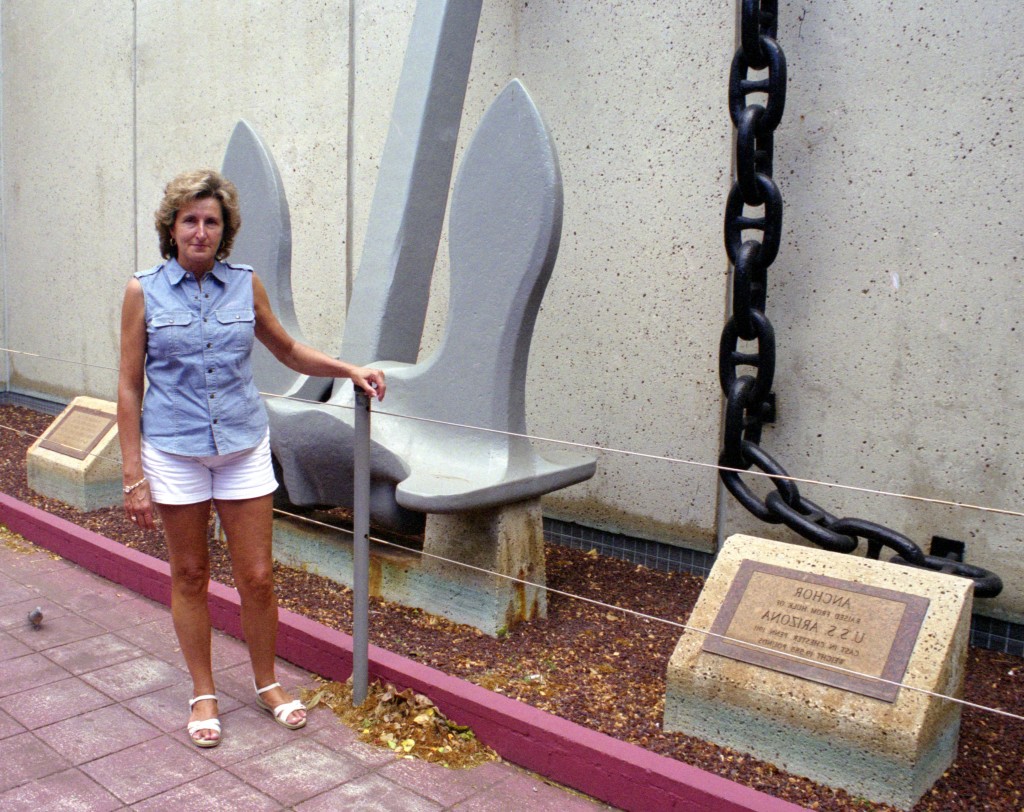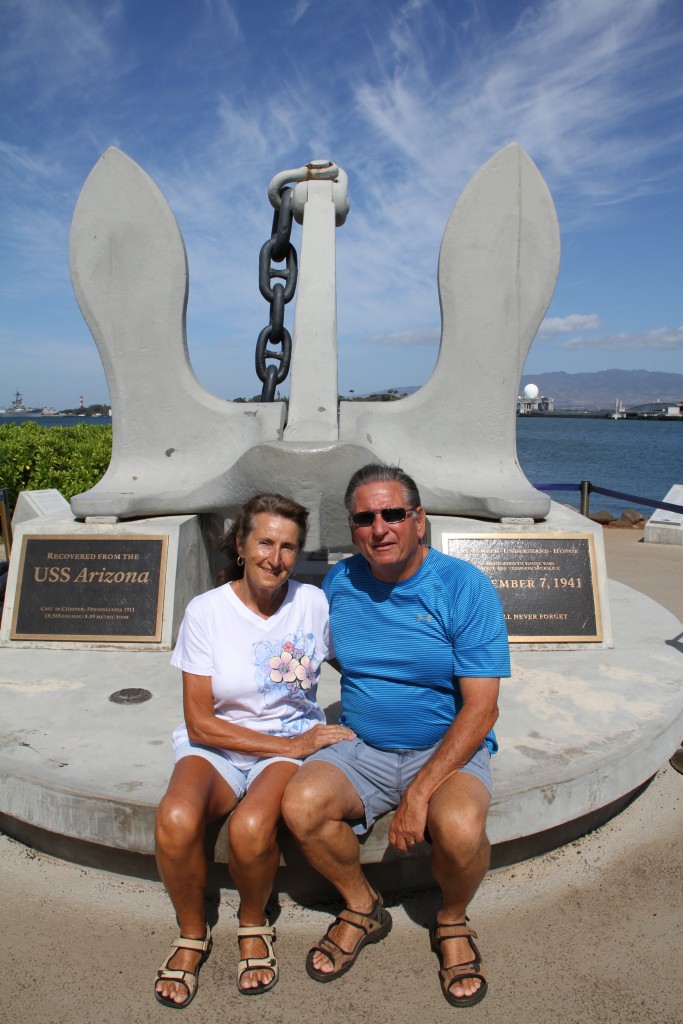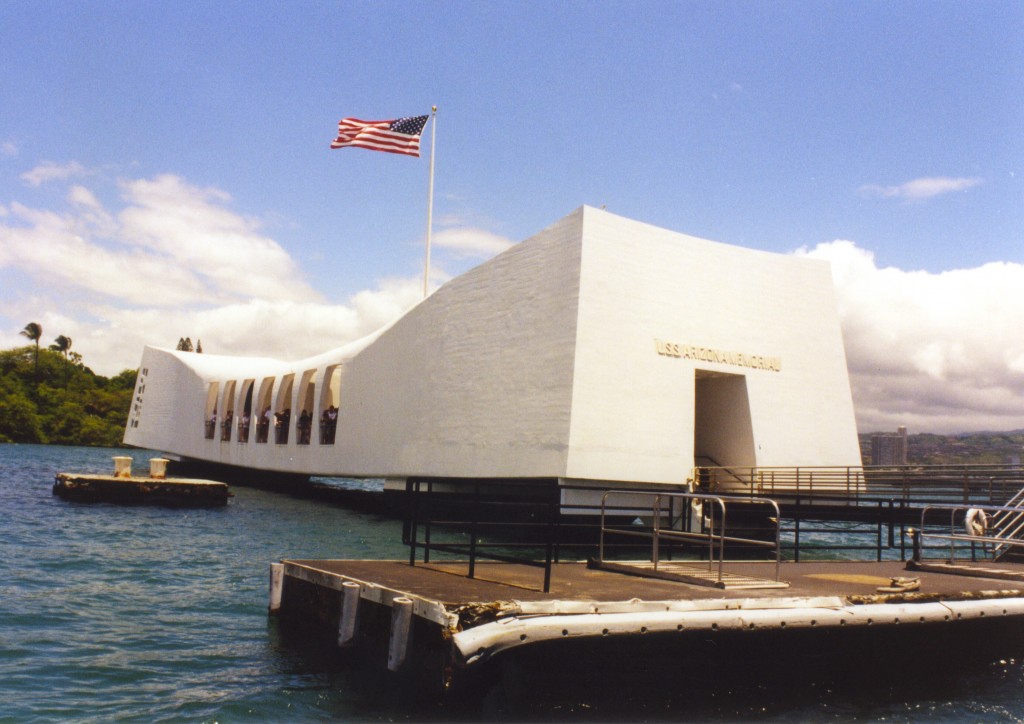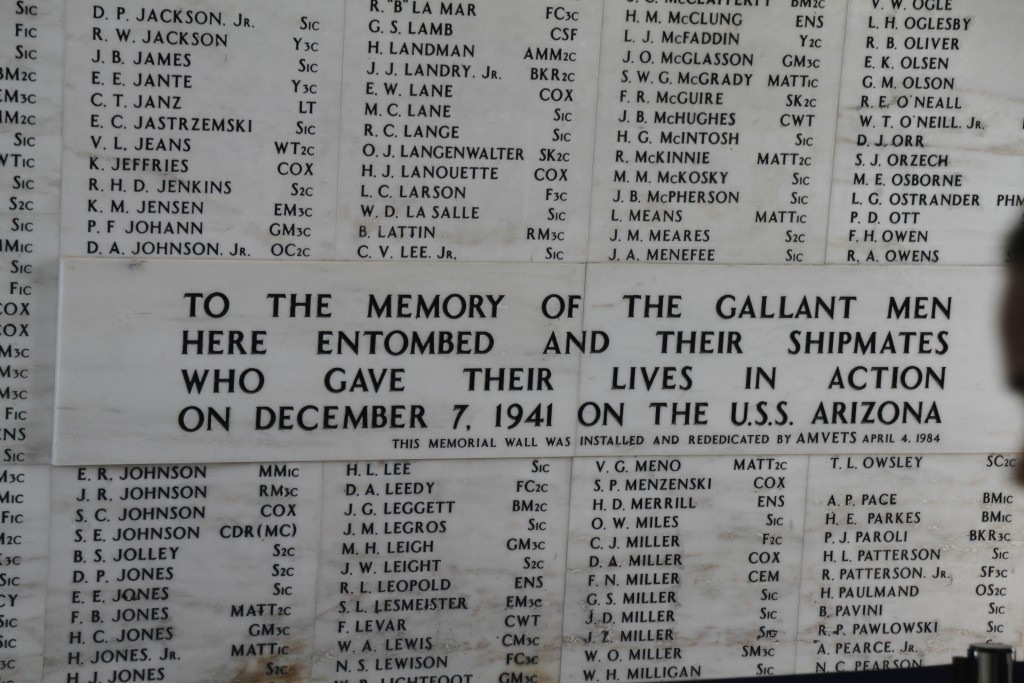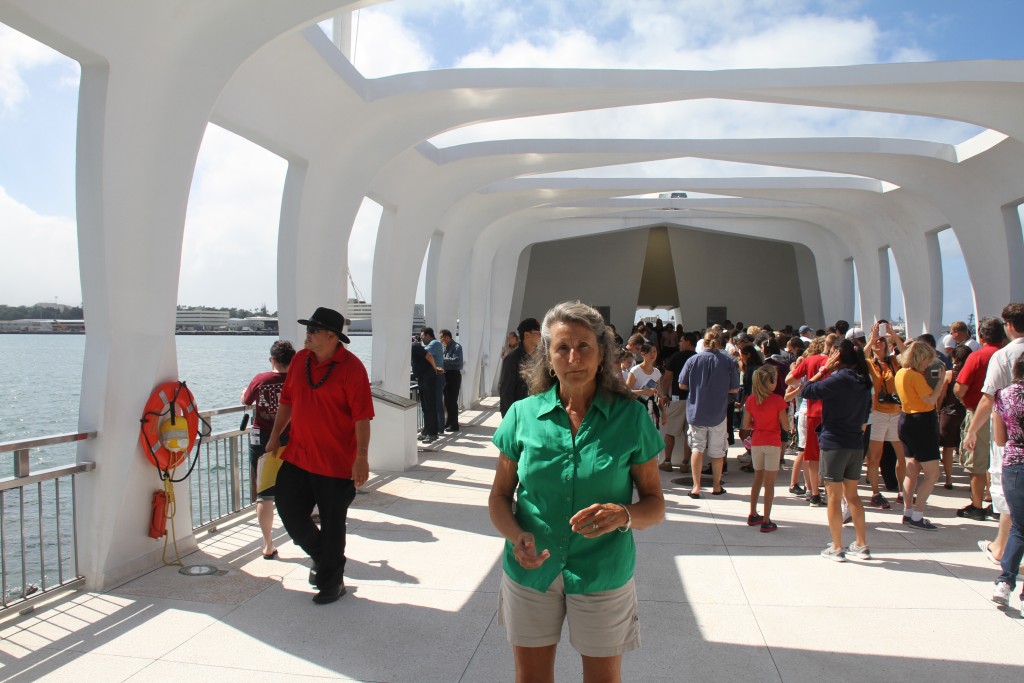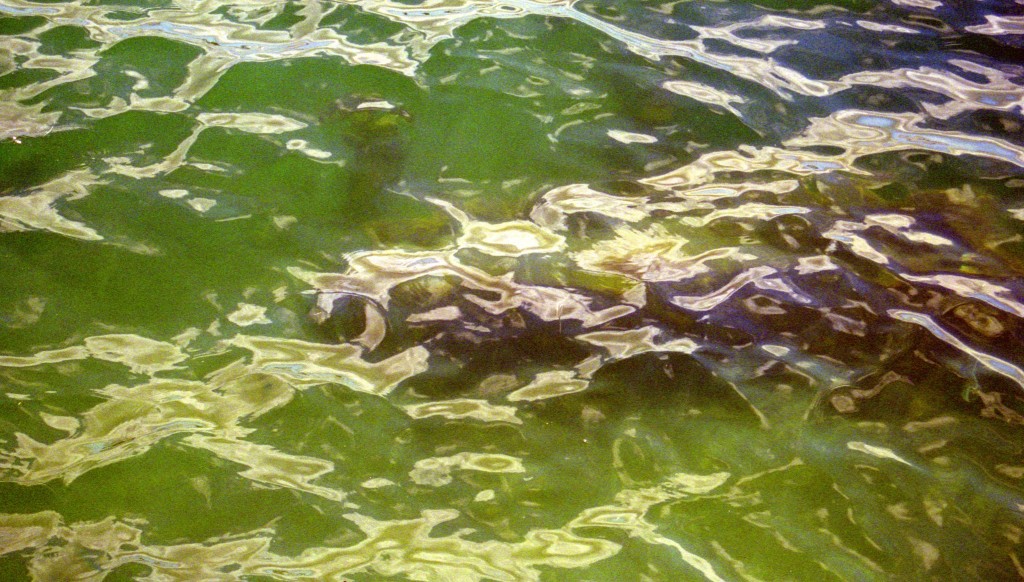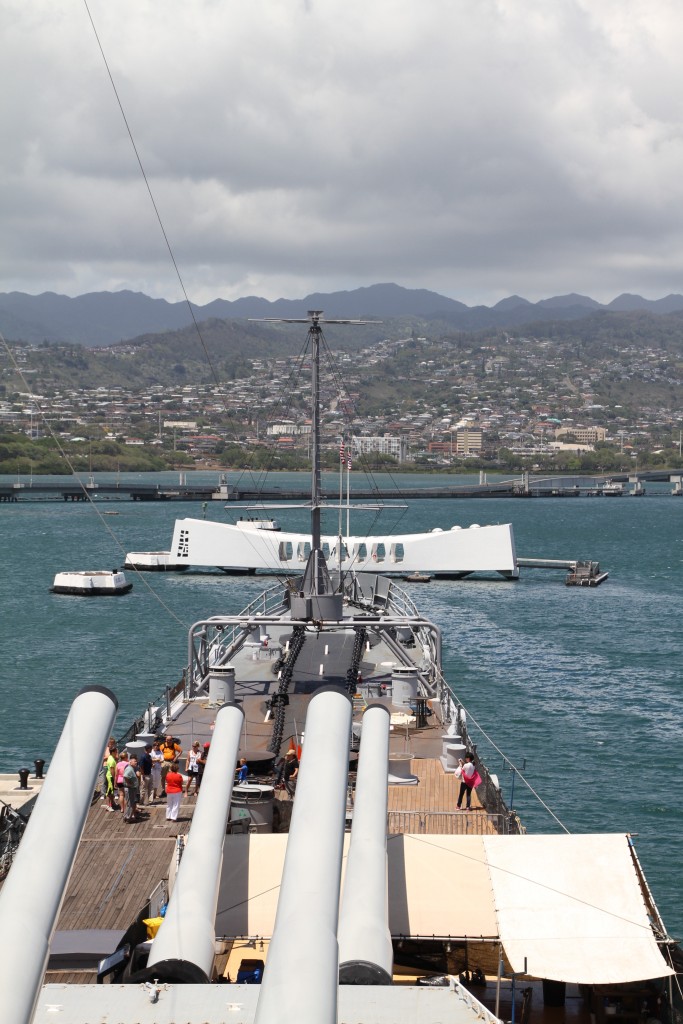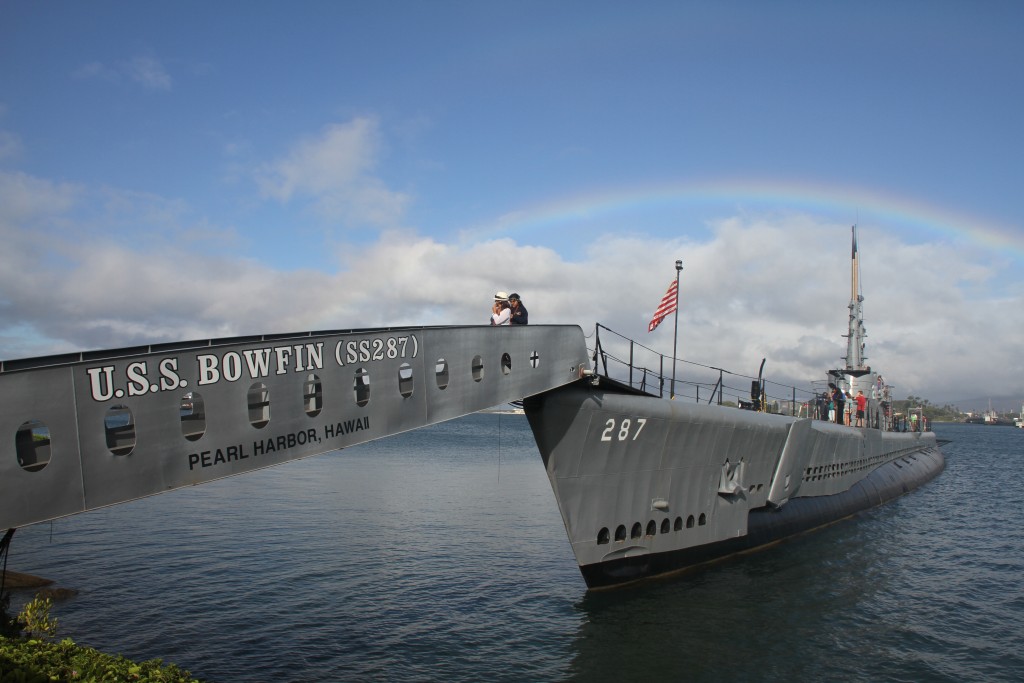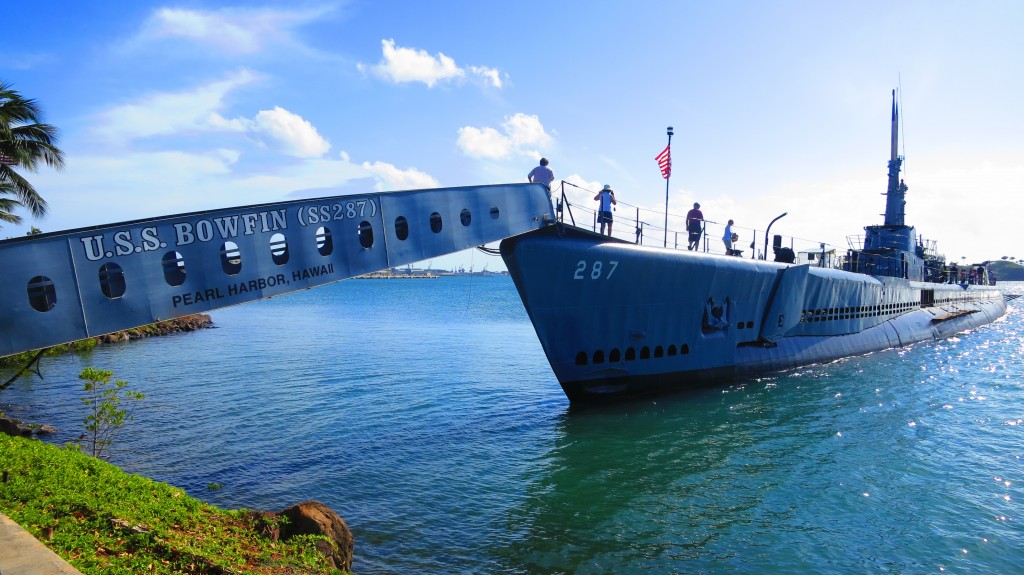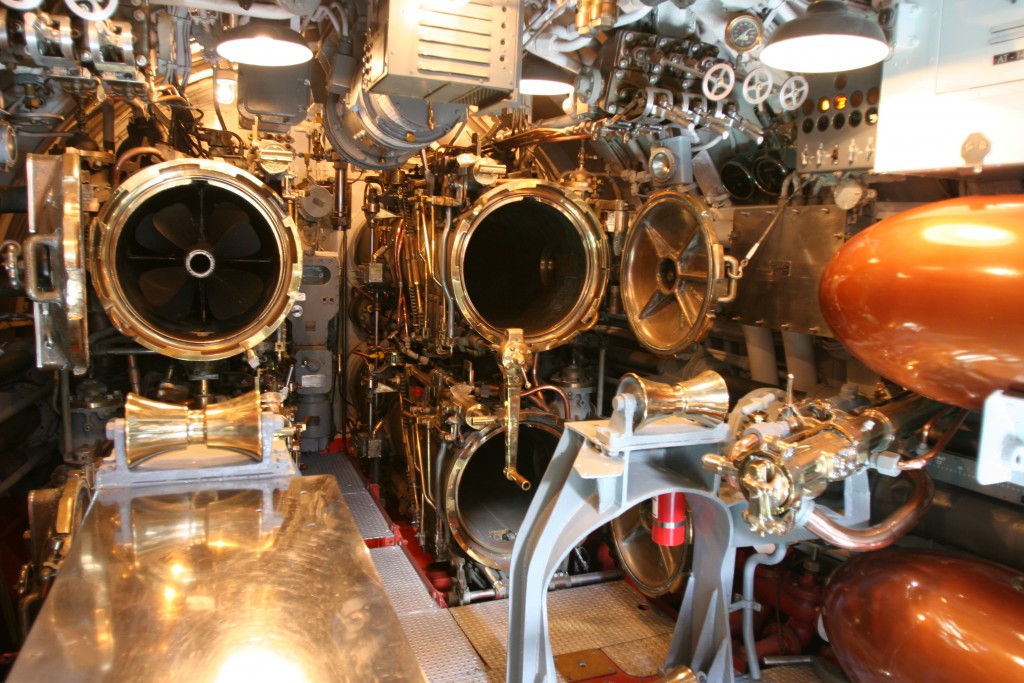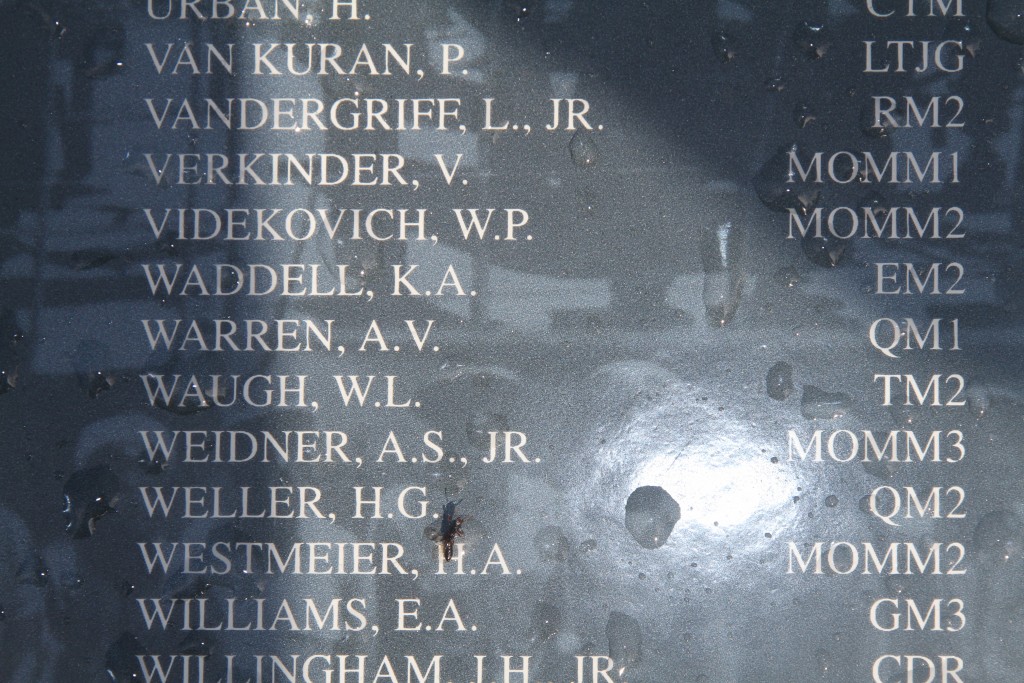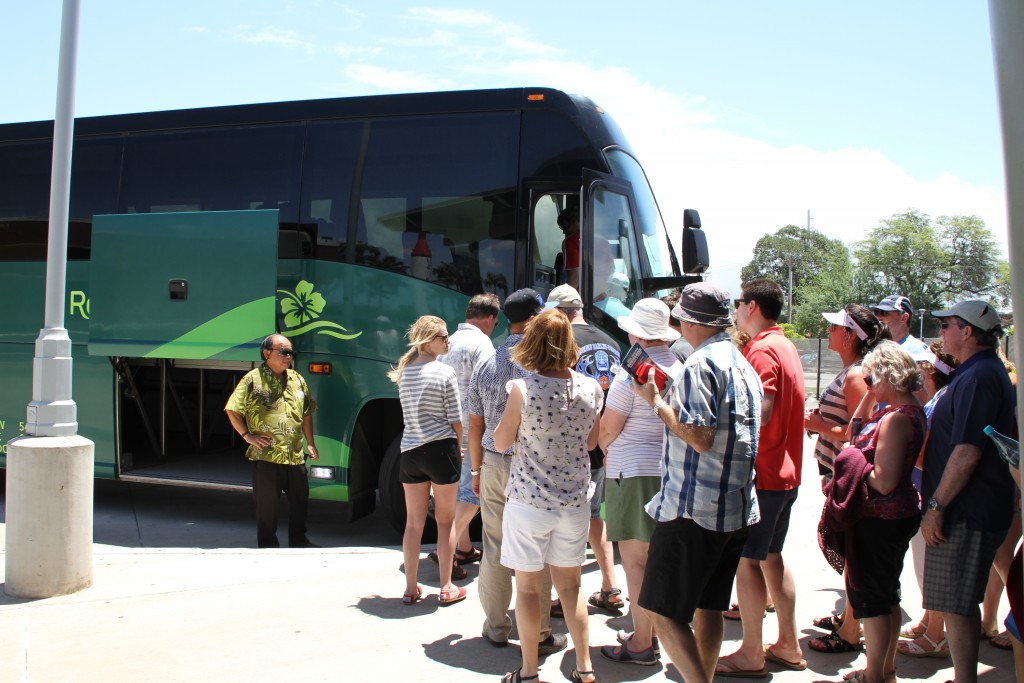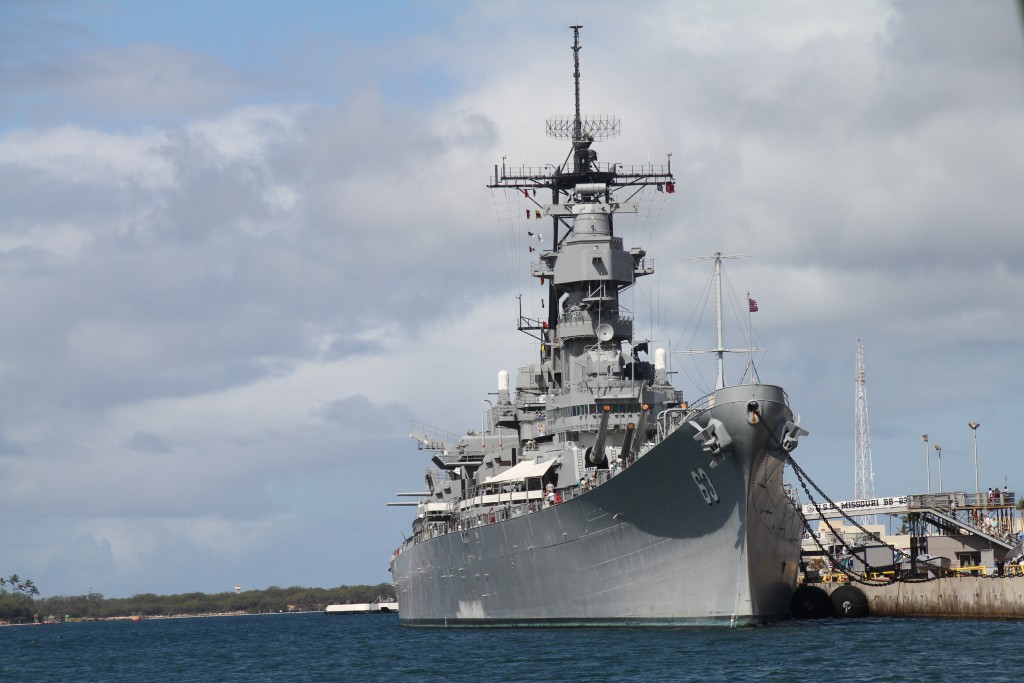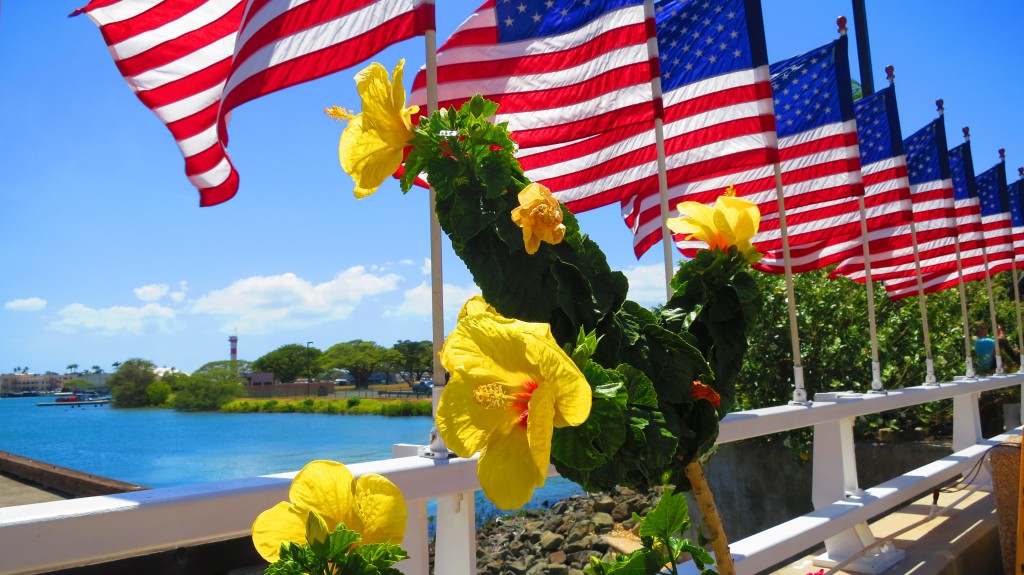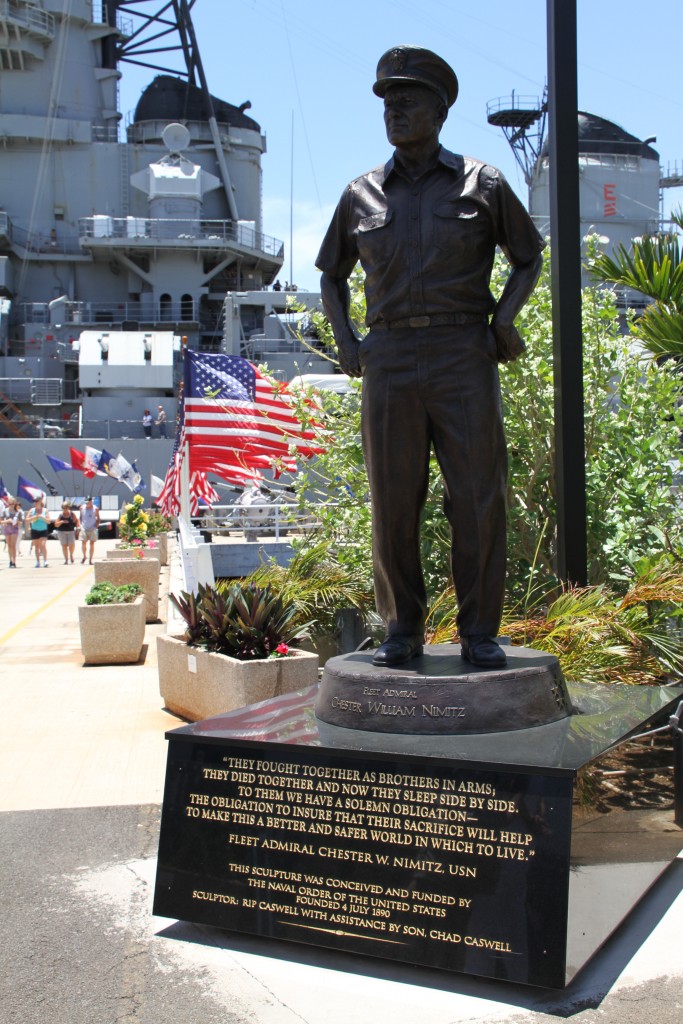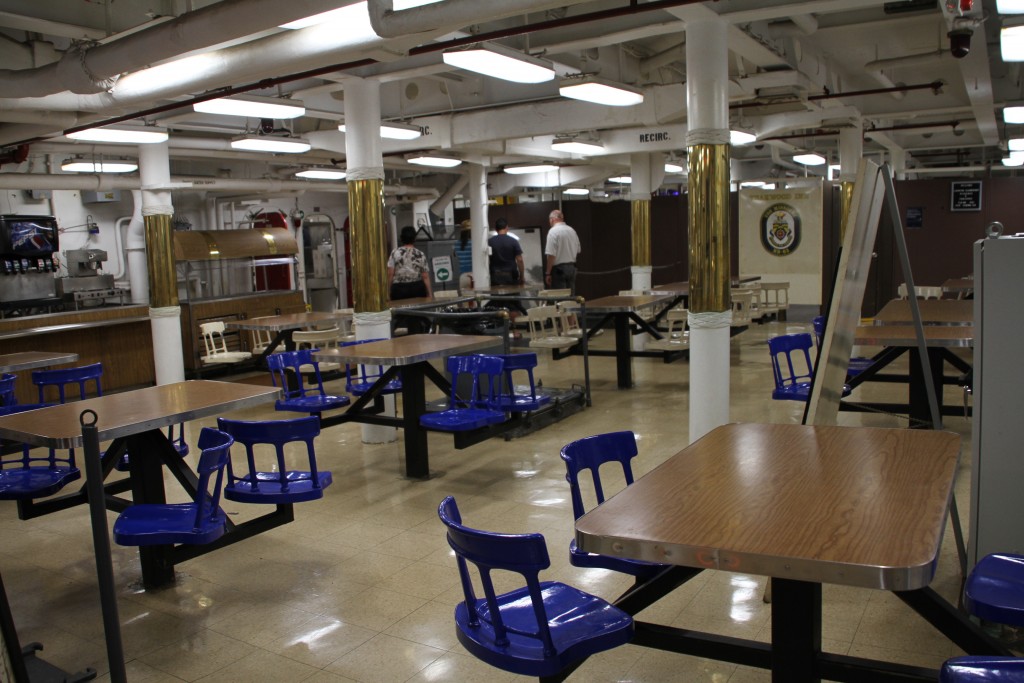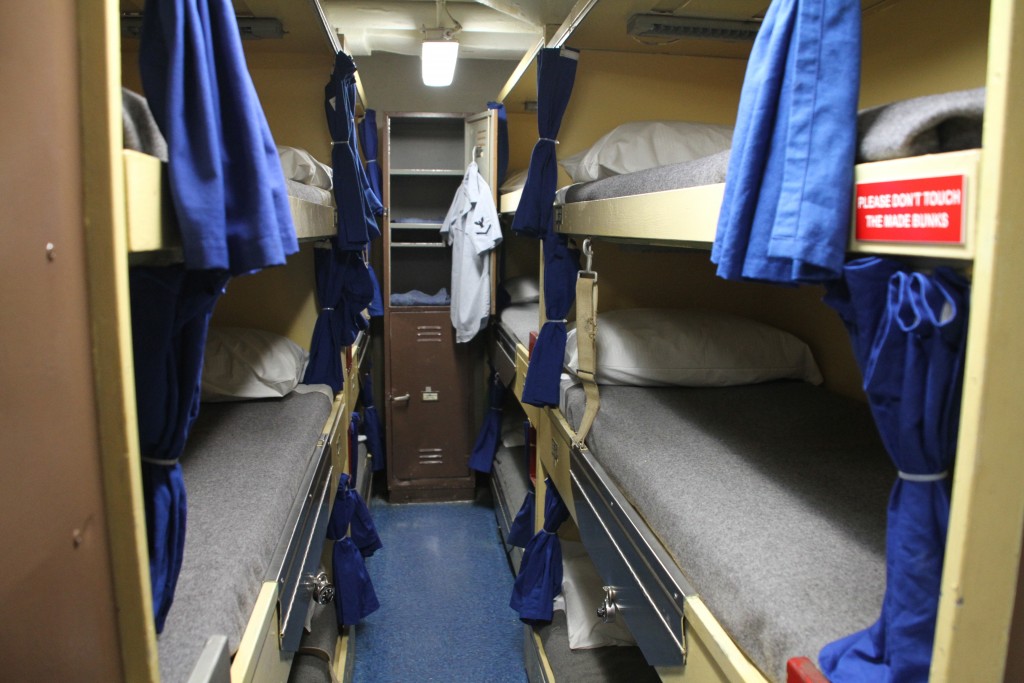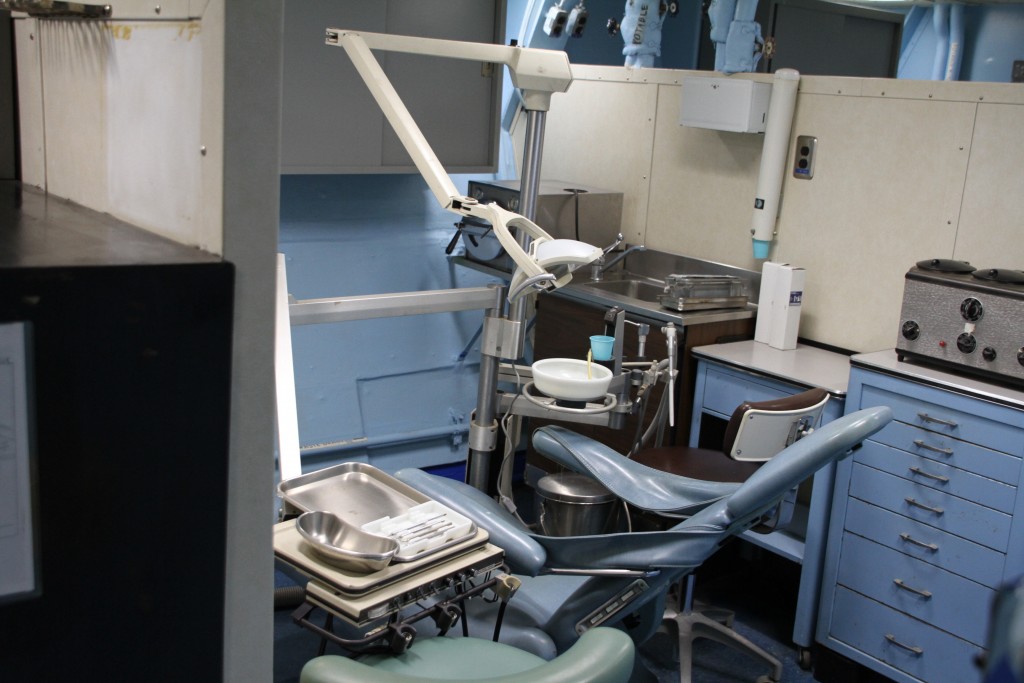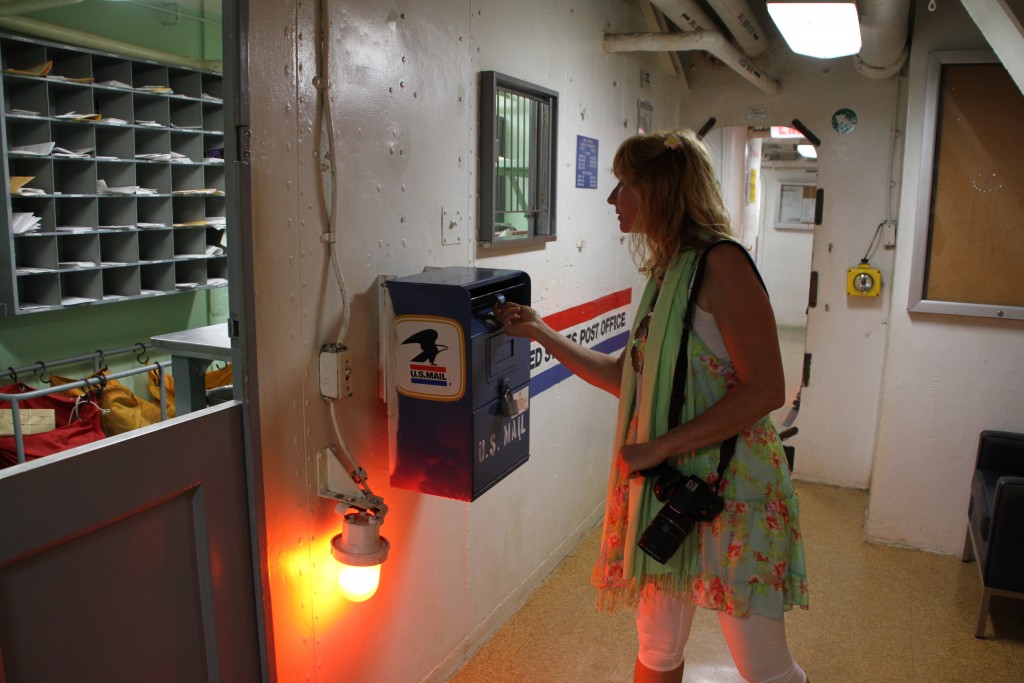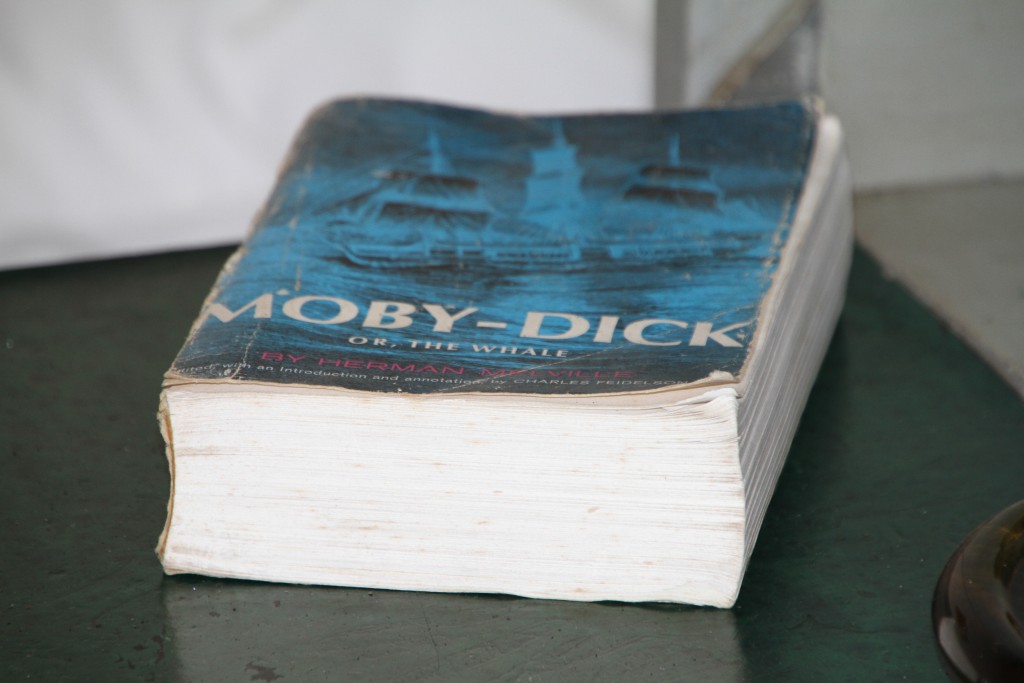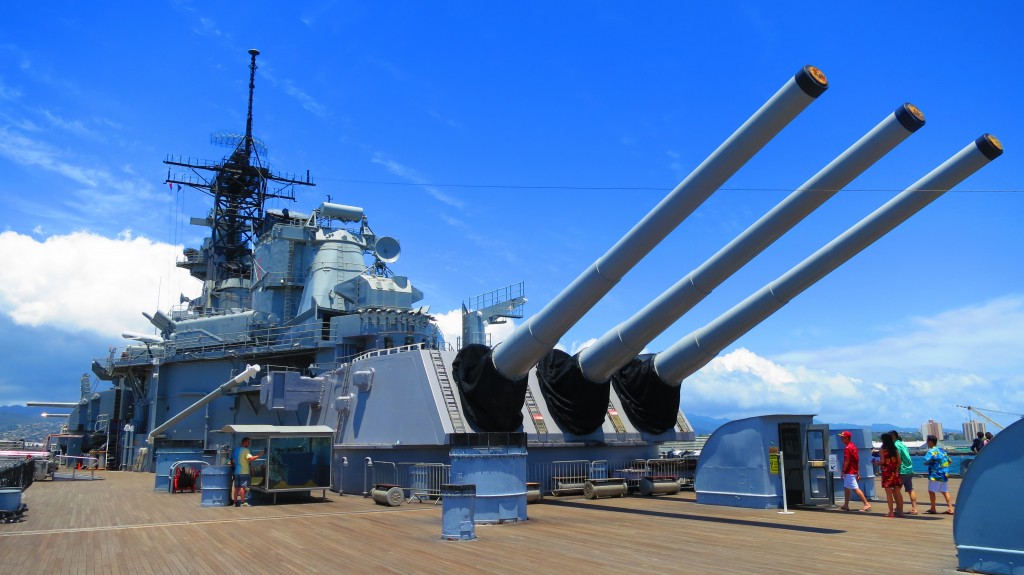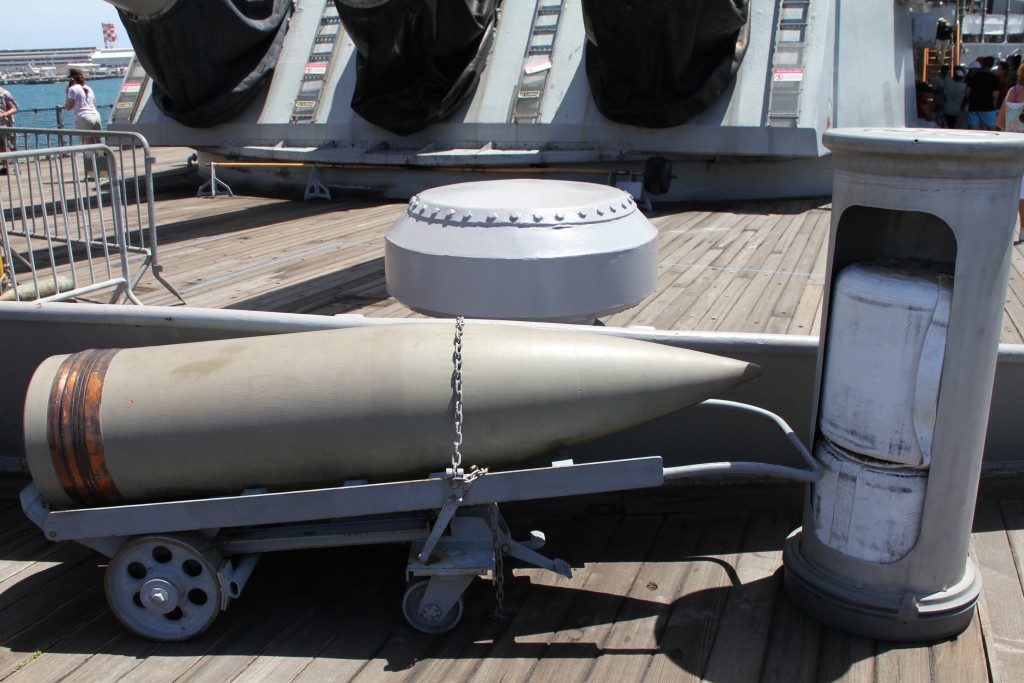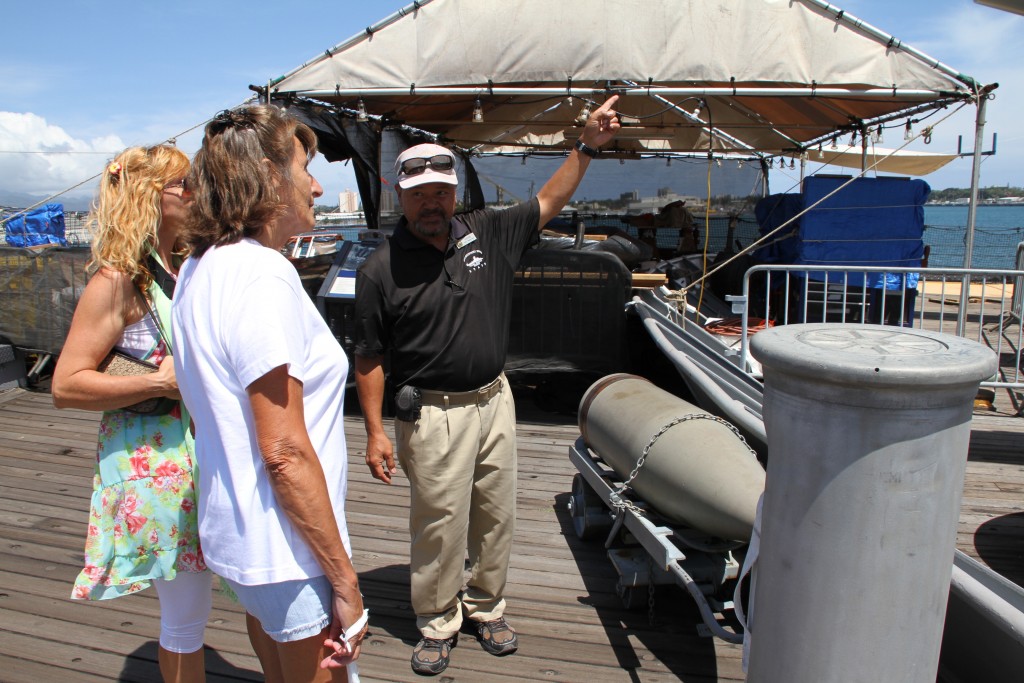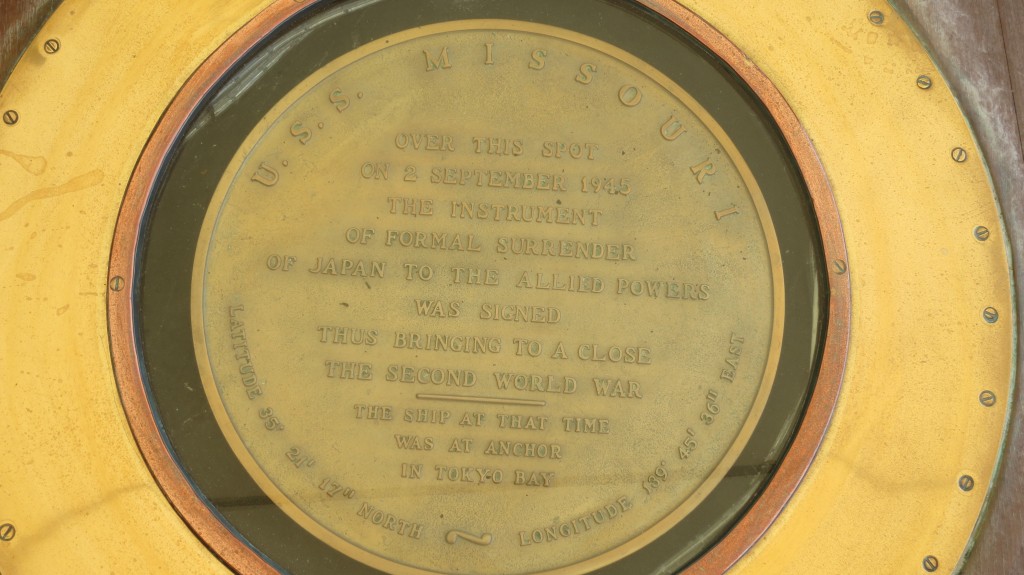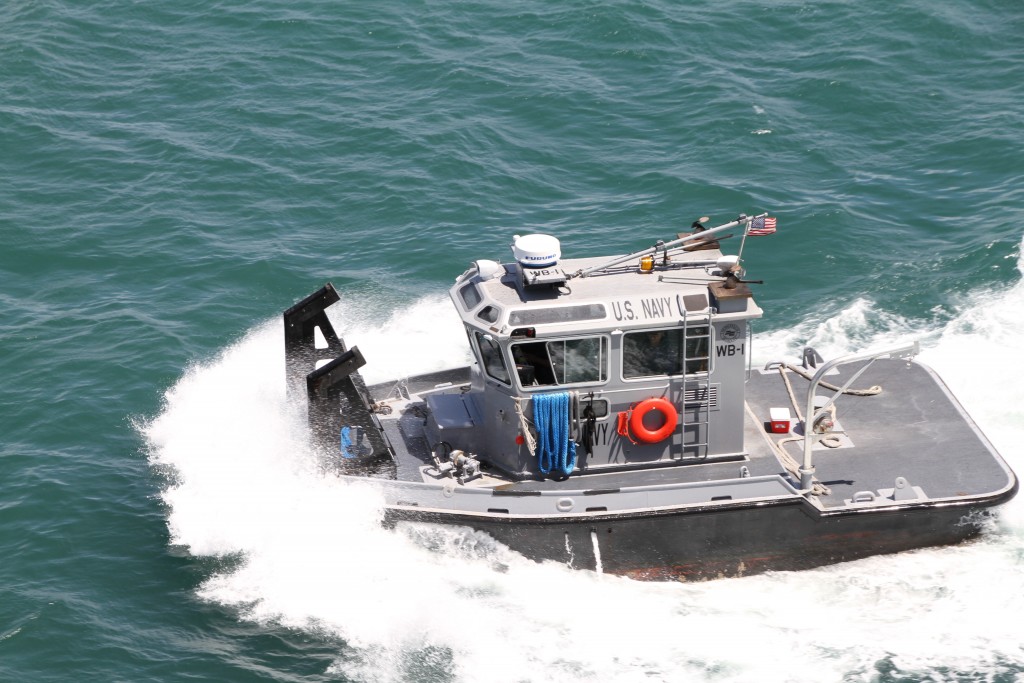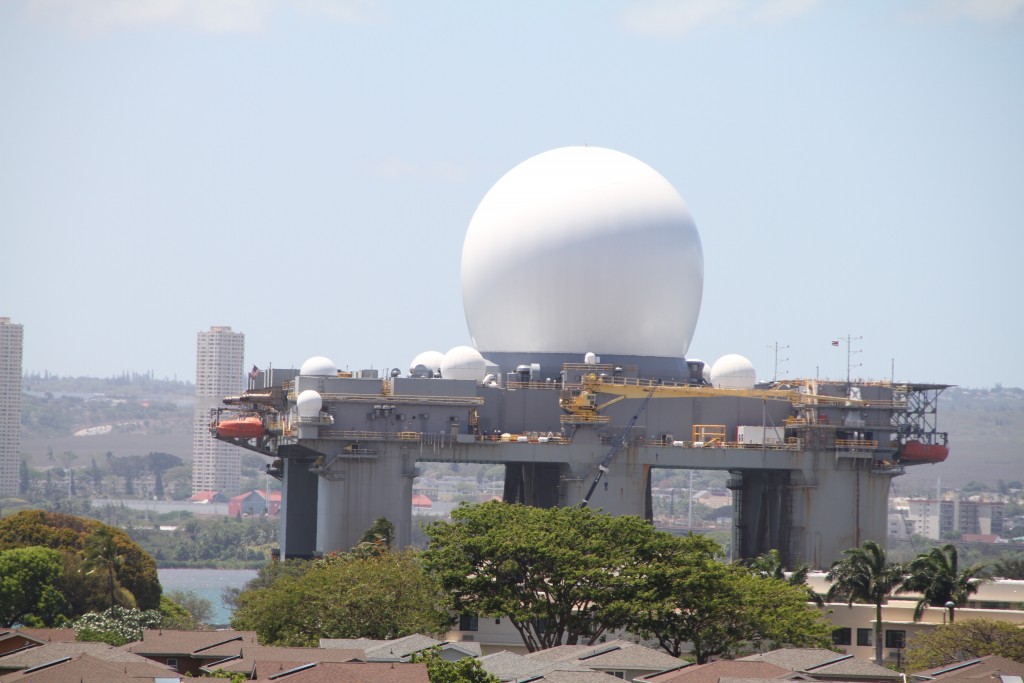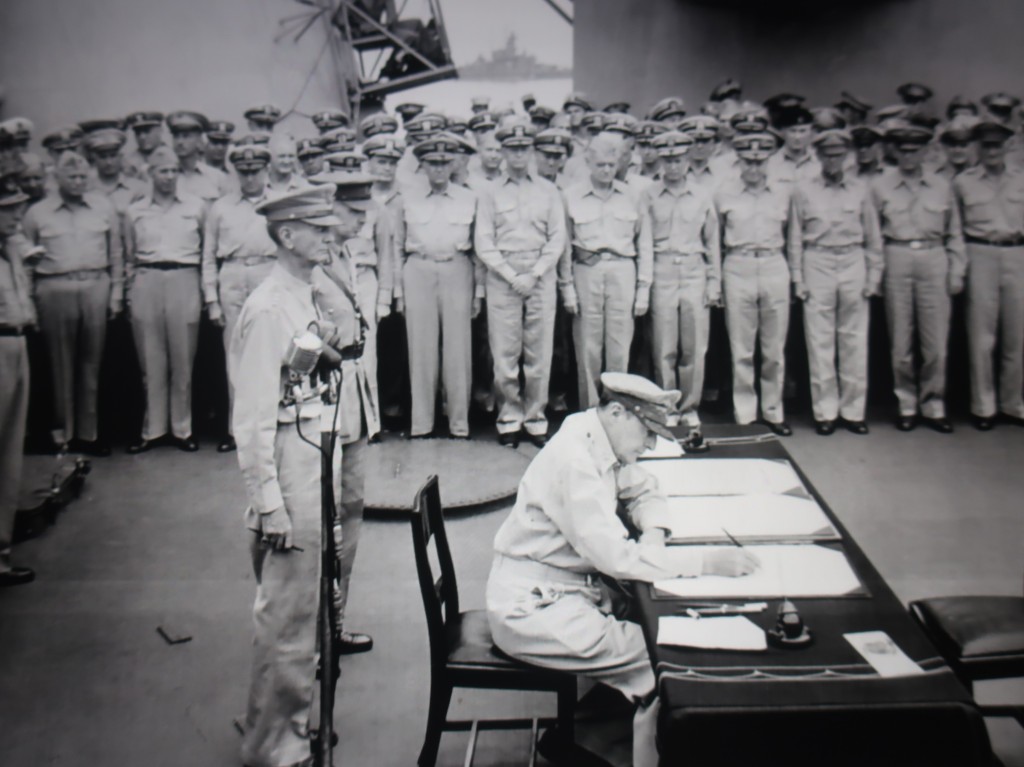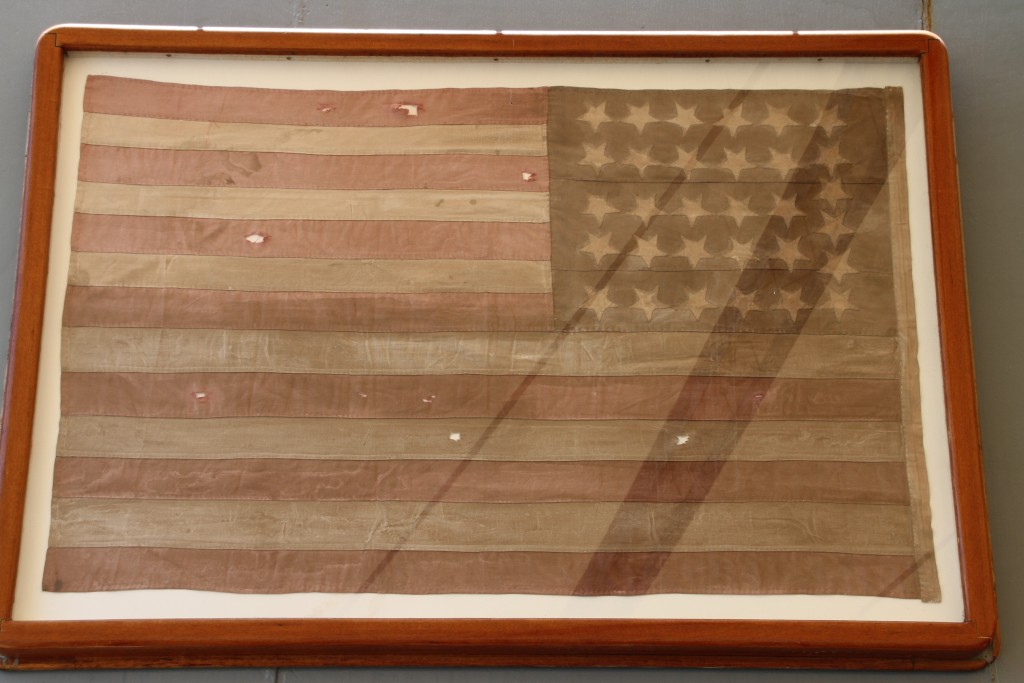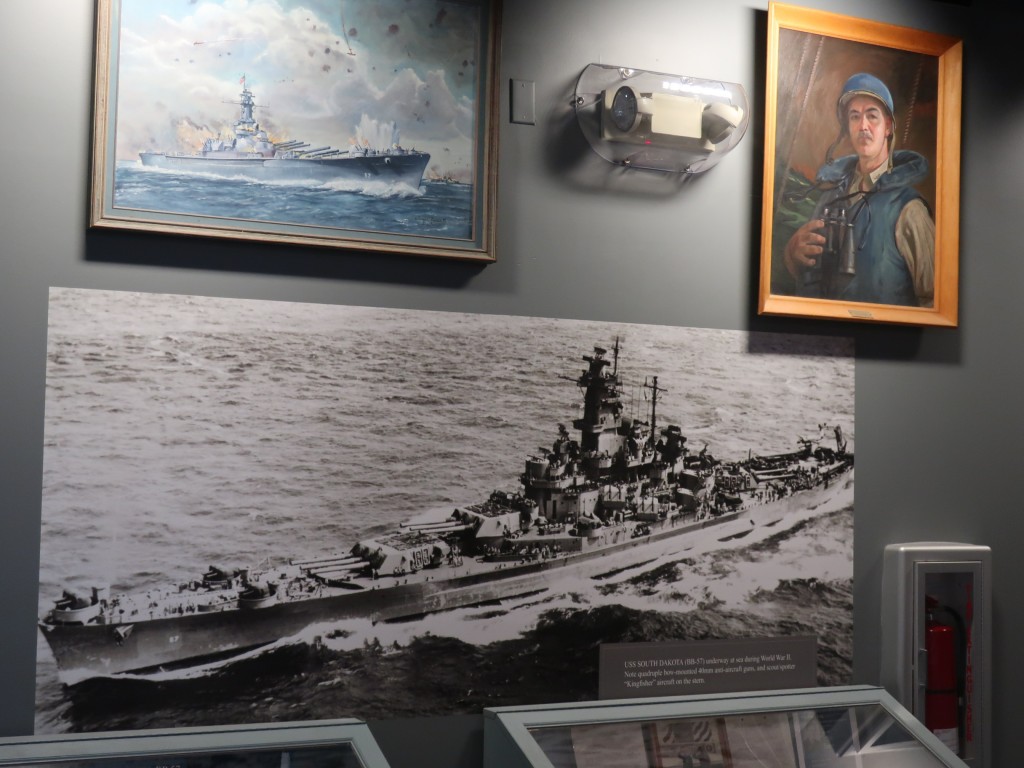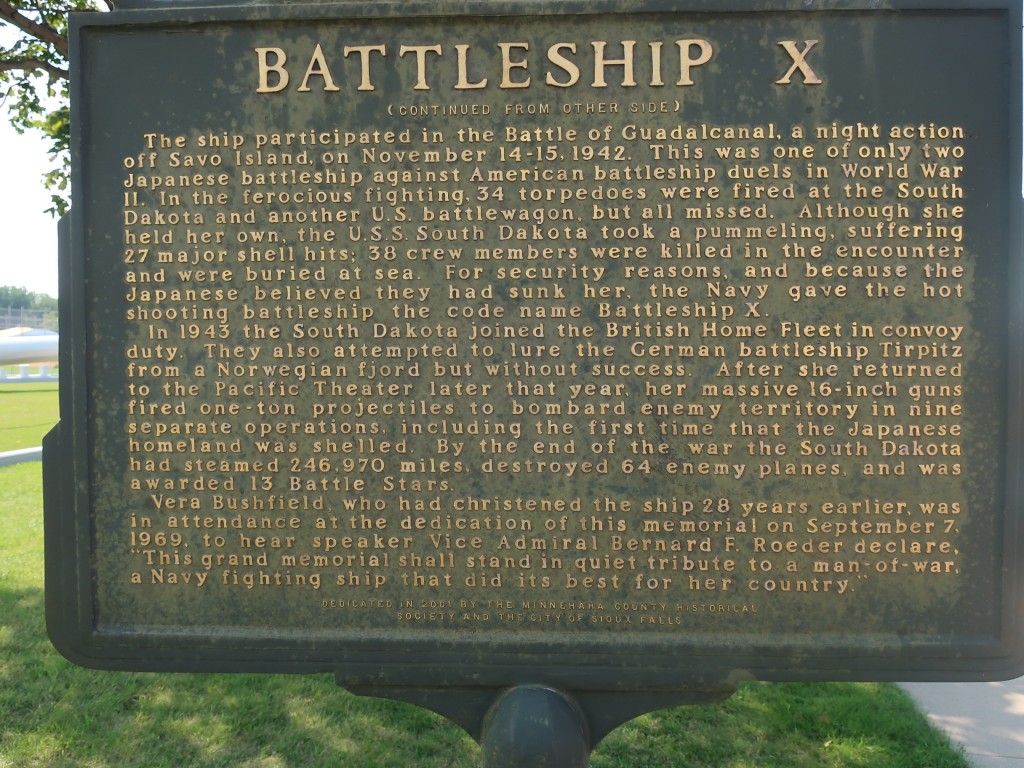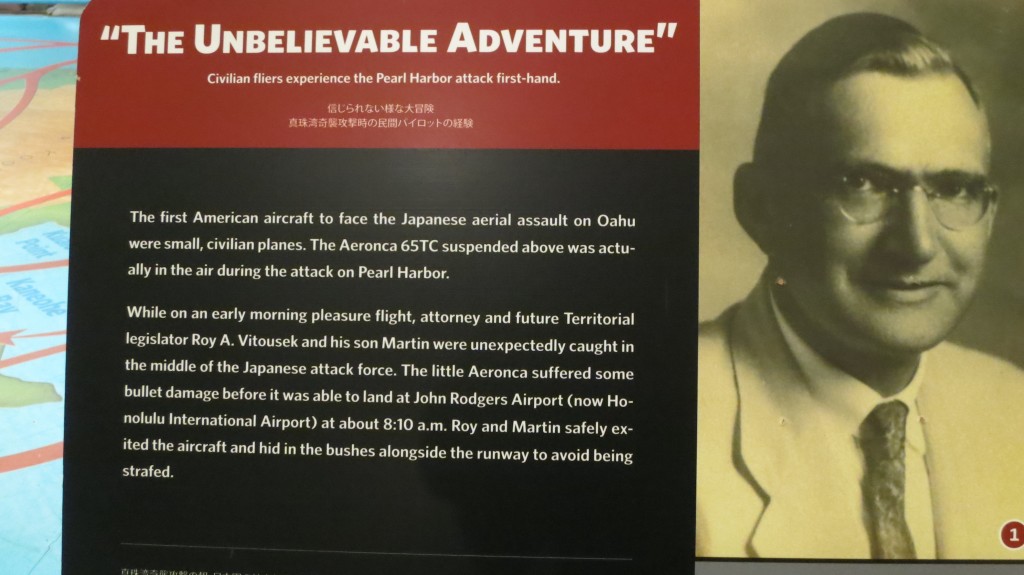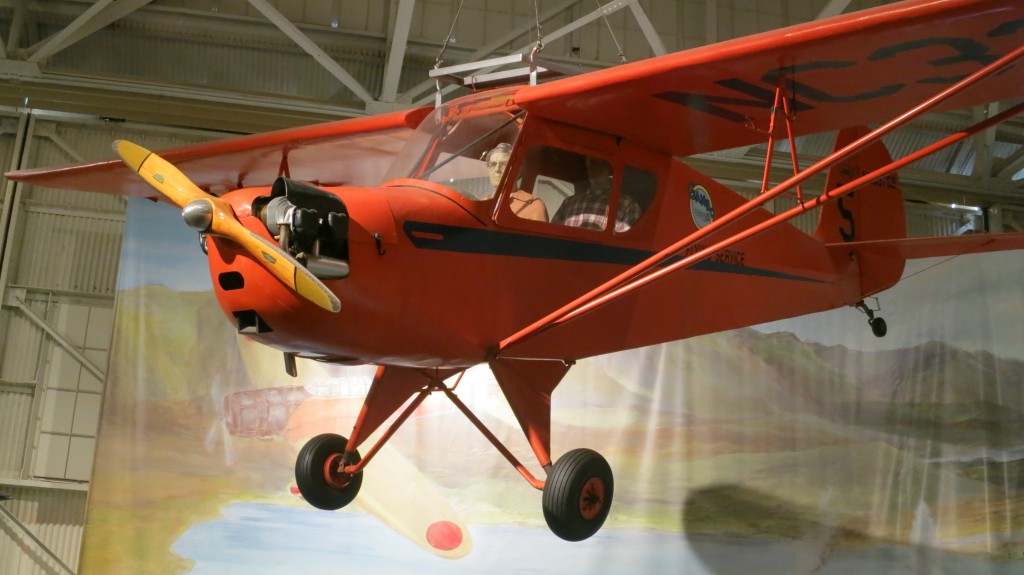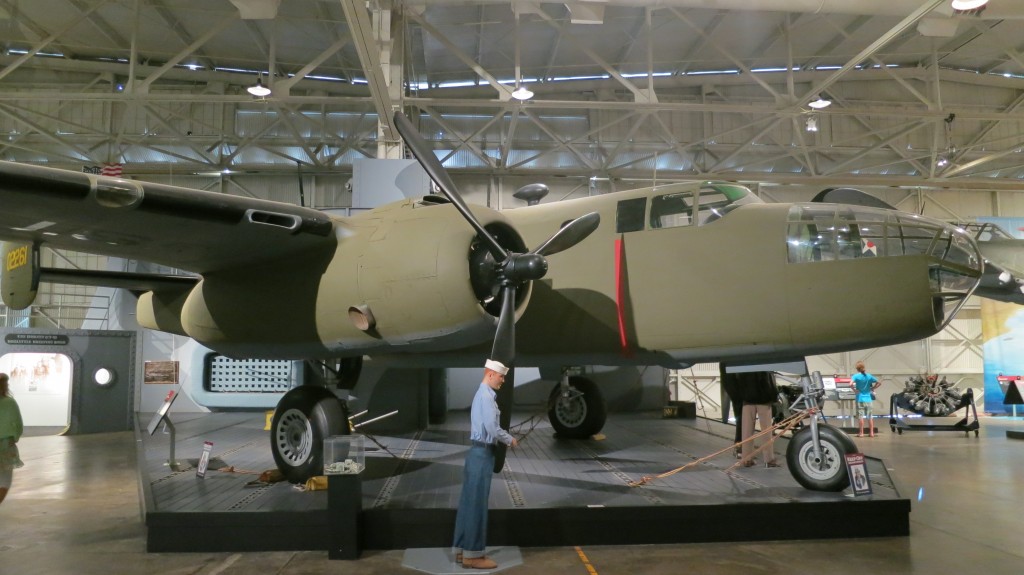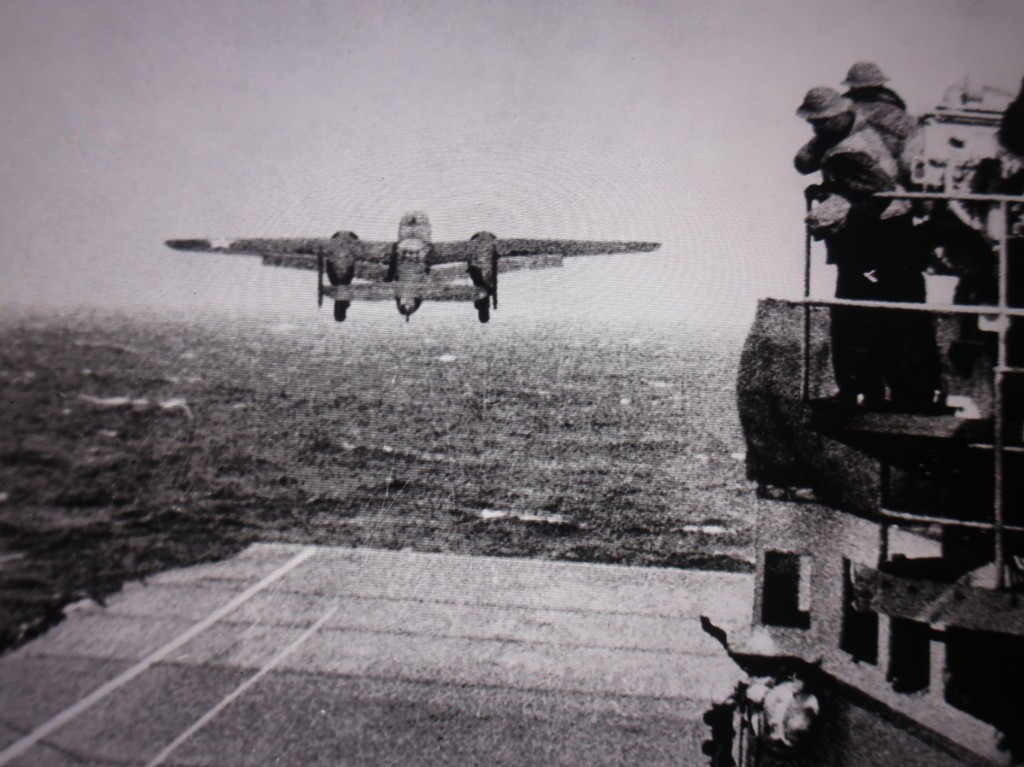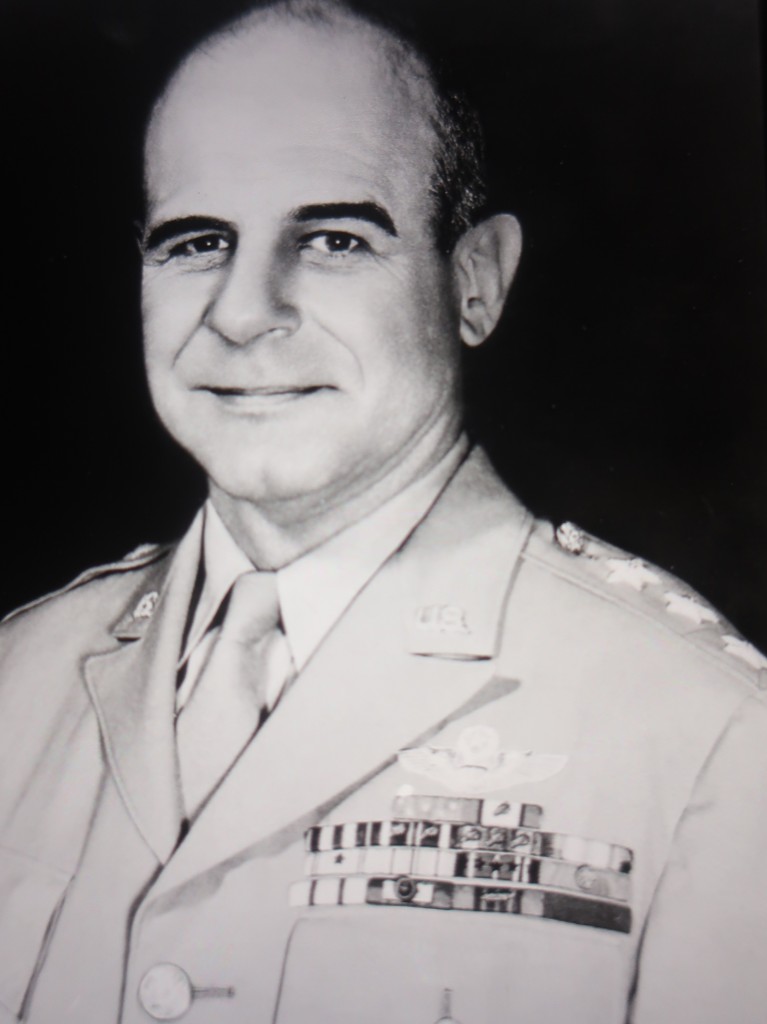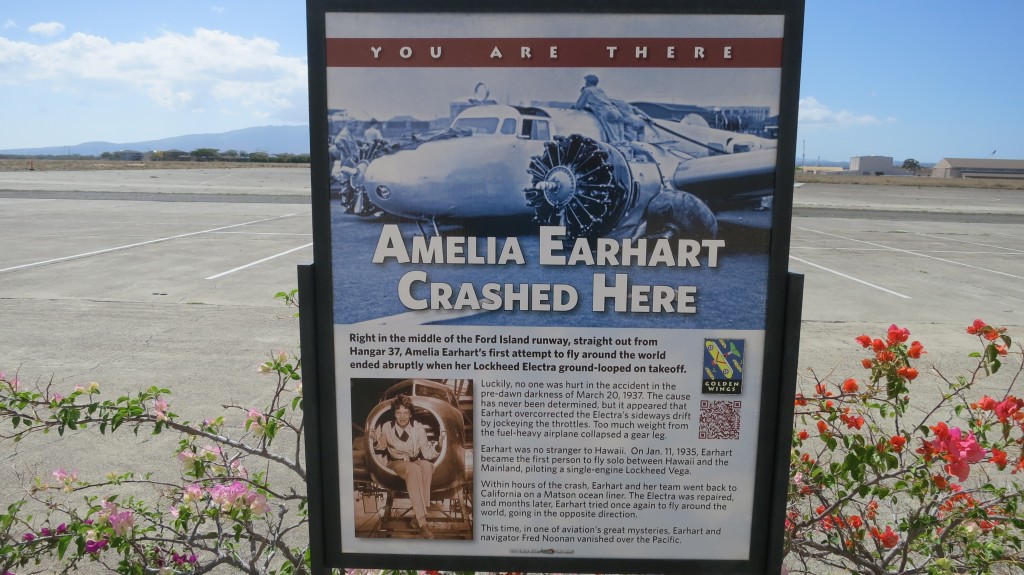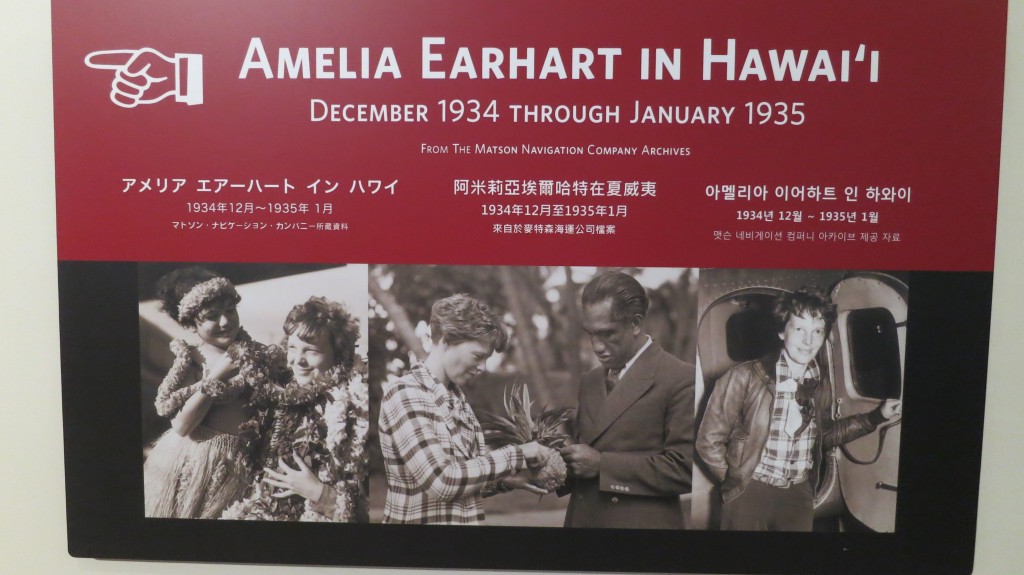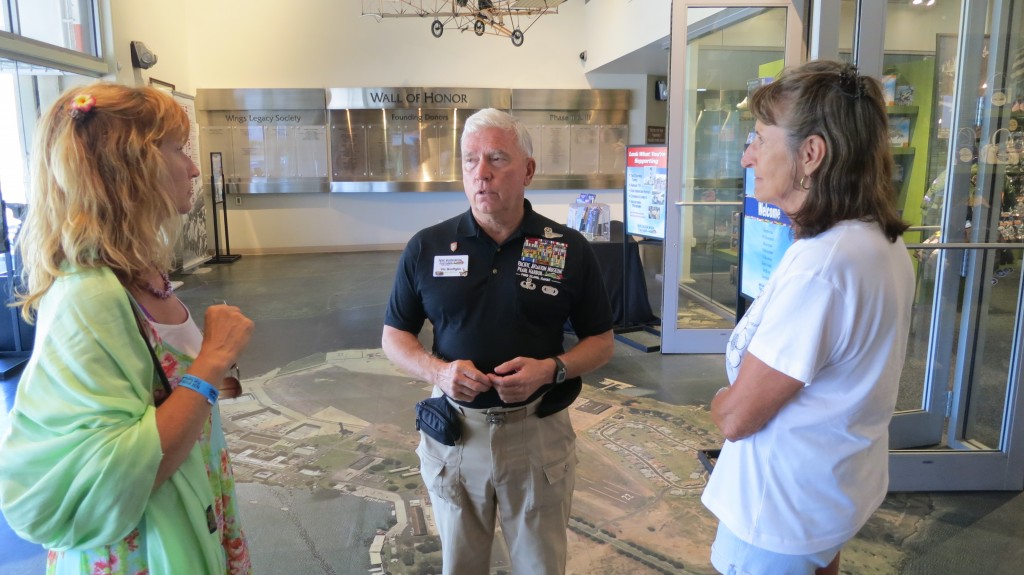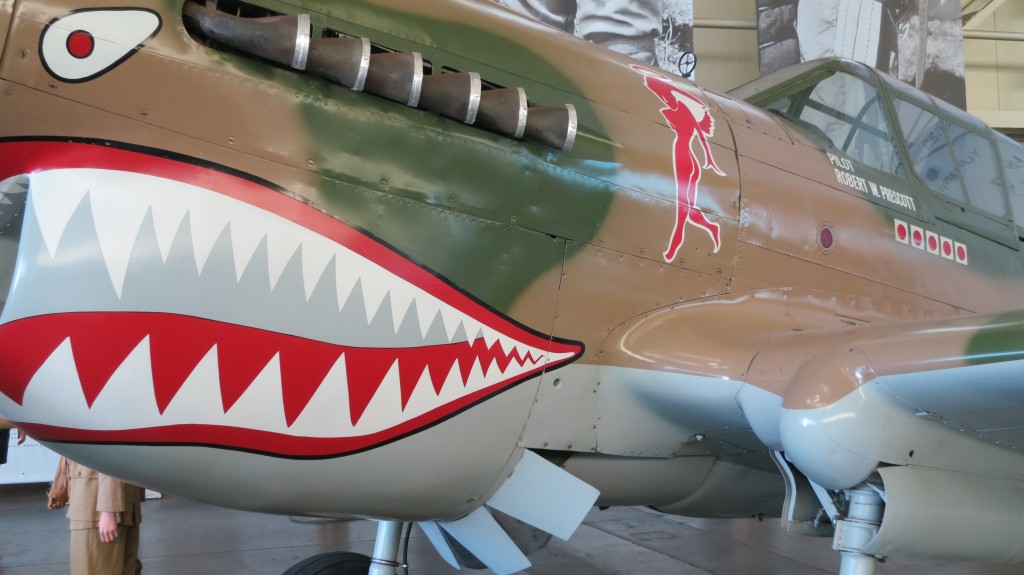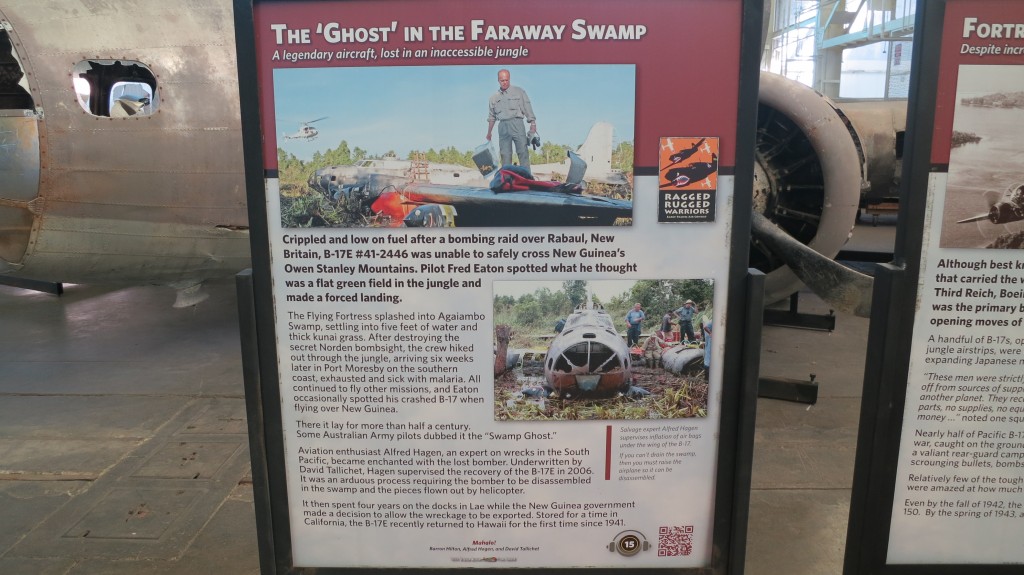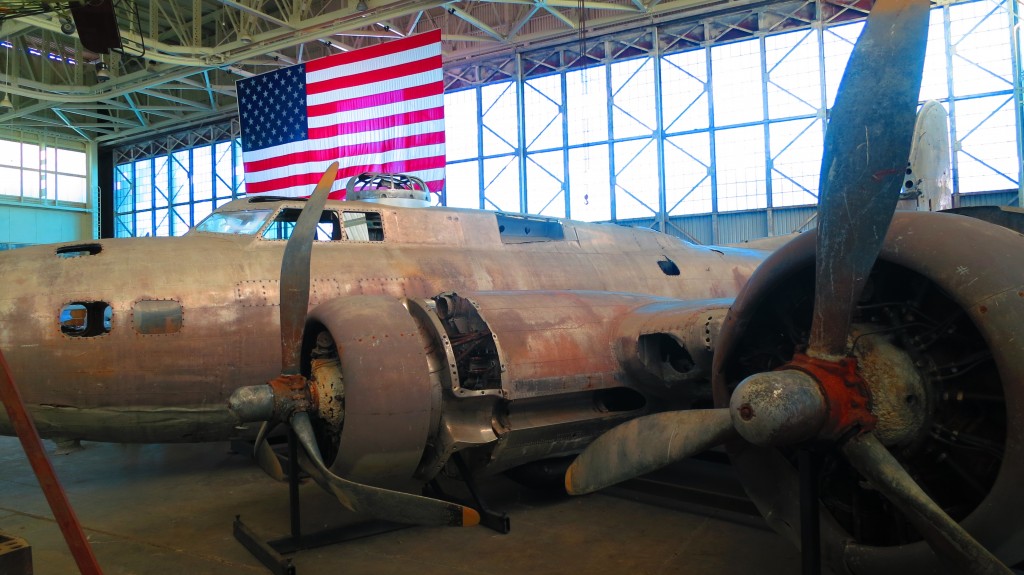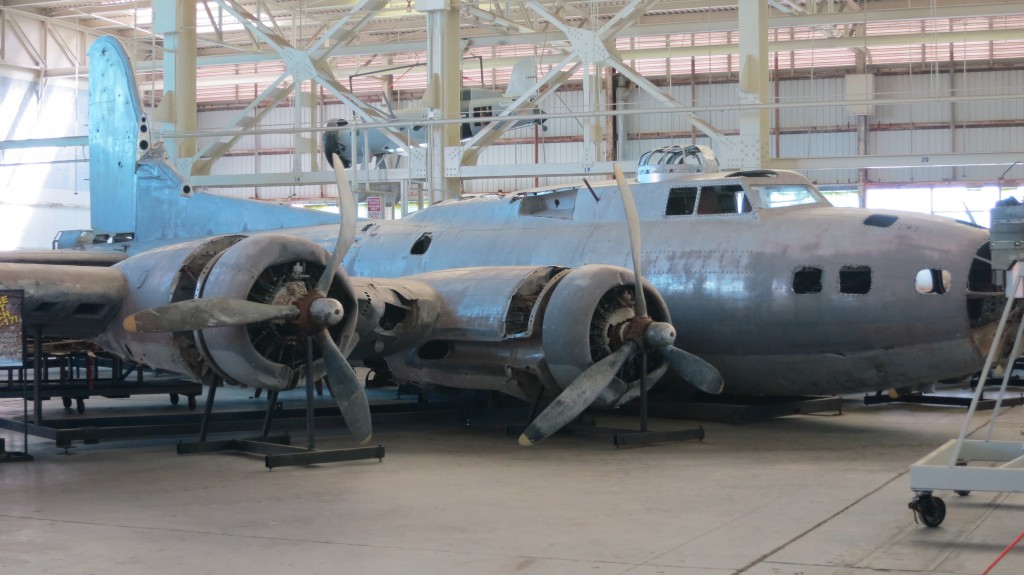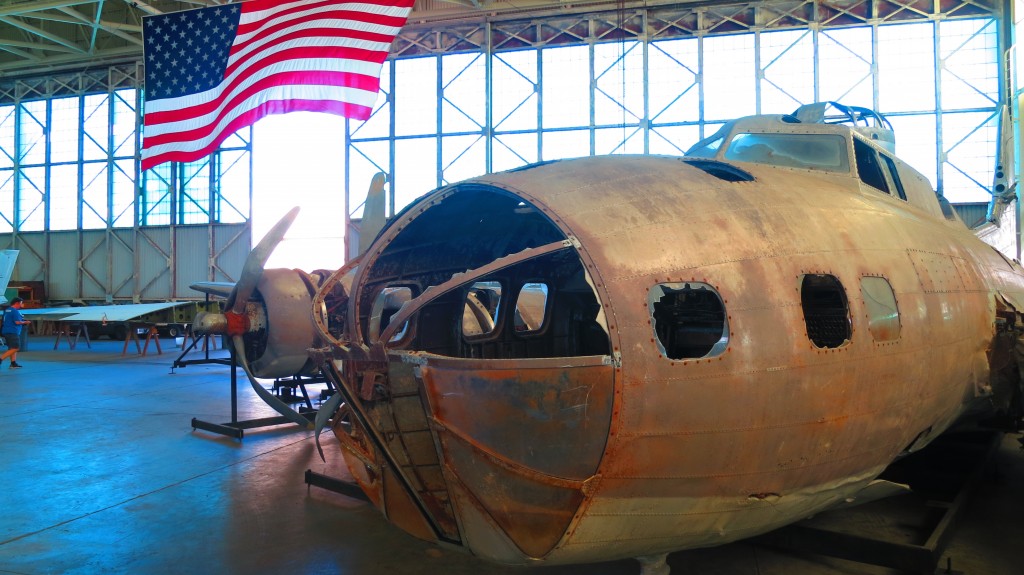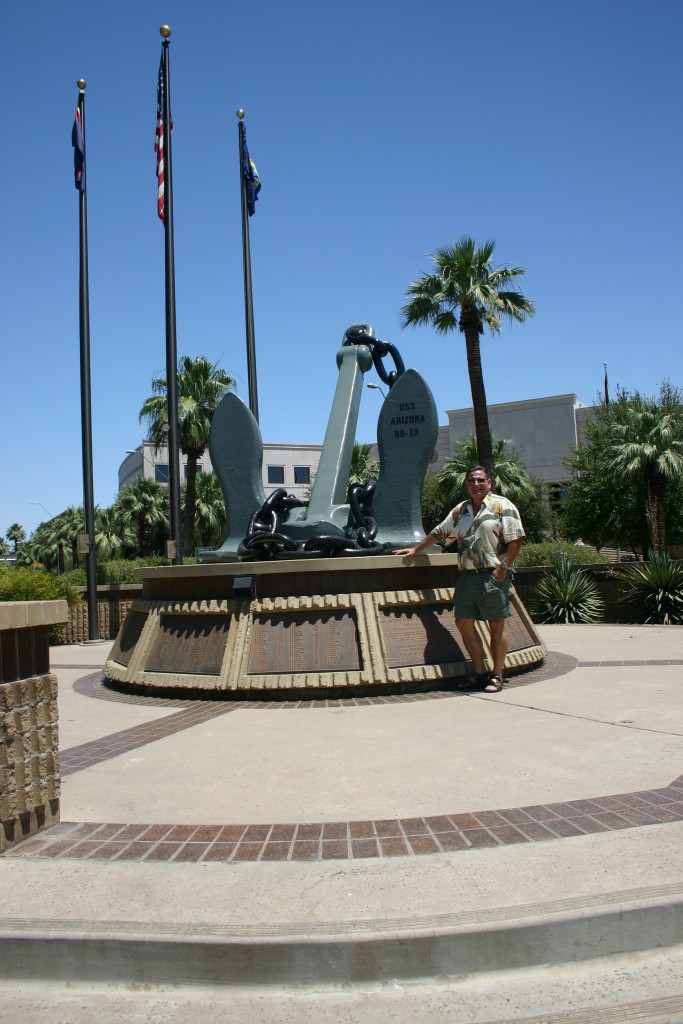The USS Arizona Memorial structure was built in 1962. Over two million people visit this famous sight yearly where over 1,102 sailors died from an explosion from a Japanese aerial bomb on December 7th, 1941.
December 7th, 1941 is a date “The Greatest Generation” will never forget. My mom was at a football game when she heard about Pearl Harbor. A flashbulb memory is a vivid moment–seared into the mind– that will always be remembered. I was in third grade when I heard of the death of JFK on November 22, 1963. I was in a classroom when the Challenger blew up on January 28th, 1986. And 9/11/2001 took place when I was at school too. Where where you?
The Japanese bomb hit the forward magazine of the USS Arizona (where the ships bombs were held) causing a massive explosion. Touring the museum, we found out that not everyone perished:
The Japanese had planned this attack for several years. The Japanese words “Tora, Tora, Tora,” signified a successful attack.
President Franklin Roosevelt would call this attack “A Day that Will Live in Infamy.” His exact speech can be viewed in the free museum on the premises.
In fact, visiting Pearl Harbor is free as well as parking. It is highly recommended you will need to go on the website at www.recreation.gov to get your tickets and schedule a time for your visit. Reserving your tickets, though, will cost you one dollar.
A small ship will take you out. Due to Covid19 now, only 50 people at a time are allowed on each tour. Ironically, when we visited Pearl Harbor with our daughter, Pam, in 2015, the trip out to the USS. Arizona Memorial was closed “due to high winds.” I always thought that”high winds” never stopped the Navy.
The unique video that you see before taking the ship has been temporarily suspended. This video did give a good review that led up to Pearl Harbor and afterwards. I can still hear and feel the explosions of Pearl Harbor.
The Arizona bell was just outside the theatre.
There are several museums that should not be missed. There are various artifacts of the event and day on display.
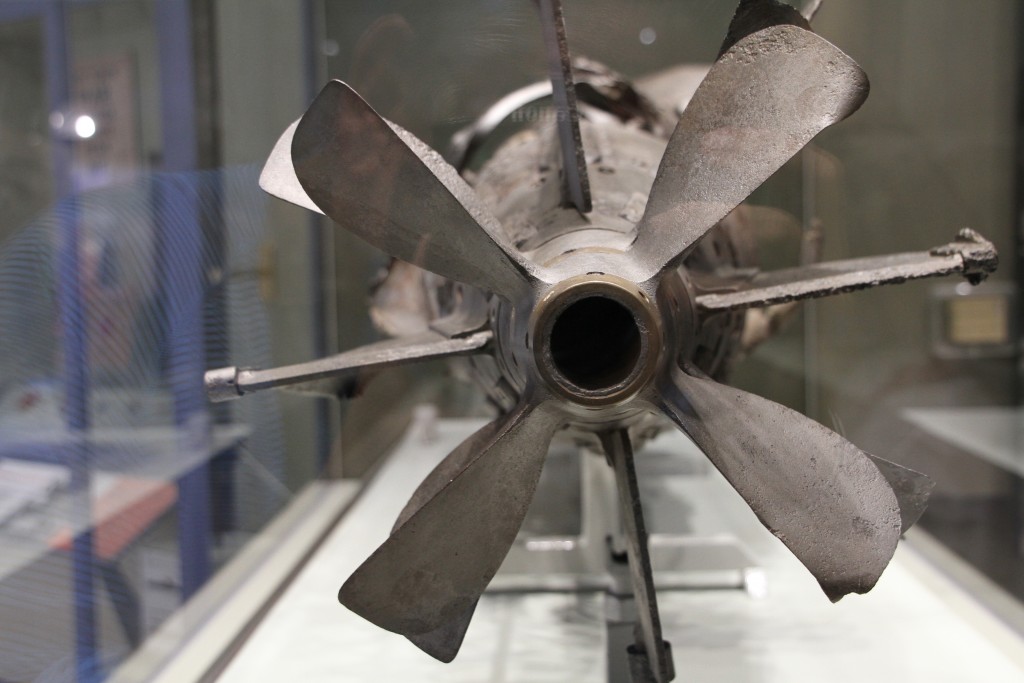
A Navy uniform that is still bloody is on display.
Every once in a while, a guest speaker is brought in. My fondest memory was meeting a Pearl Harbor survivor, Herb Weatherwax, who wrote a book (which I read) called “Counting My Blessings.” More than a year later Herb passed on at the age of 99.
In 2007, I purchased the book below from Allen Seiden for my grandson.
One of my favorite stories concerning the attack on Pearl Harbor are the actions of a crewman on the USS West Virginia, Doris Miller. He was a African-American serving breakfast that morning. When the attack occurred, Doris found an unmanned anti-aircraft gun and started shooting at the Japanese. Ironically, he was never trained to do so. Later, he helped the wounded. His actions were so well received that Doris was the first black American awarded the Navy Cross, the second highest decoration for valor by the Navy. Unfortunately, he would later die in the war at the age of 24 in 1943. His body was never found.
In the main area close to the museums is one of the anchors of the Arizona. At one time, in 2007, an anchor was located at the entrance to the complex.
They have since moved this anchor close to the water’s edge, overlooking the Arizona.
Where is the second anchor? The answer is at the end of this expose.
It only takes about five minutes from the dock to the Memorial. Some people say the Memorial looks like a “squashed milk carton.” The architect, Alfred Preis, intended that the sag in the middle “expresses initial defeat and then stands strong at the ends.”
At one end is a listing of all those who died—1,177 – on the U.SS. Arizona. You will notice that there were 38 sets of brothers that died and even one father and son who died together: Tom and Will Free.
Oil still leaks from the Arizona after almost eighty years. It is referred to as “The tears of the Arizona” or even “black tears.” The National Park Service monitors this ecological concern.
The USS Missouri faces the Arizona Memorial as it watches the remains of the USS Arizona. It is ironic that the beginning of the war started with the bombing of Pearl Harbor and the destruction of the Arizona; while the ending of the war occurred on the USS Missouri, now only a half a mile or so away.
In walking distance of the main complex of the Arizona museums, is the submarine USS Bowfin. This submarine, as well as “Mighty MO,” and the Pacific Aviation Museum are operated by independent non-profit organizations.
Ironically, the USS Bowfin (SS-287) was commissioned on December 7th1942. It saw plenty of action on nine different patrols. She was nicknamed “The Pearl Harbor Avenger.”
The submarine is over a football field in length and 27 feet wide. It could carry eighty men. This submarine is the real thing. It could go down to 400 feet. This submarine could stay submerged for 48 hours. It carried 24 torpedoes.
One could say the USS Bowfin was lucky. Statistics show that 52 submarines in the Pacific never made it back killing 3500 men.
We were on a plane going to Las Vegas. I had a rather interesting conversation with the man next to me, Dr. William Waugh. I mentioned we were going to Hawaii. He said, “My dad served on the USS Bowfin.” Sure enough, I found Dr. Waugh’s dad on the inscription. It is indeed a small world.
Going through the USS Bowfin is a treat. The $15 dollar ticket is well worth the experience, particularly if you have never been on a submarine. I would not recommend this sojourn to anyone who is claustrophobic though.
Sinking over 15 enemy vessels, the USS Bowfin did destroy an unmarked Japanese cargo ship, The Tsushima Maru. Over 1,484 civilians died including 767 schoolchildren; 59 children did survive. The horrors of war are real.
We happily waited for the air-condition bus to take us over to “Mighty Mo.”
Tickets can be purchased at the dock. Going through the USS Missouri surely did make history come alive.
By the dock is a large statue of the admired Admiral Nimitz. A dedicated museum to his accomplishments is located in his boyhood home of Fredericksburg, Texas.
Many of the ships compartments is open for viewing. It is hard to imagine how 2,700 men could live on the ship.
Mail was definitely important on the USS Arizona. My daughter, Pam, looking at the mail room.
During war time, the Mighty Mo was painted in disguise.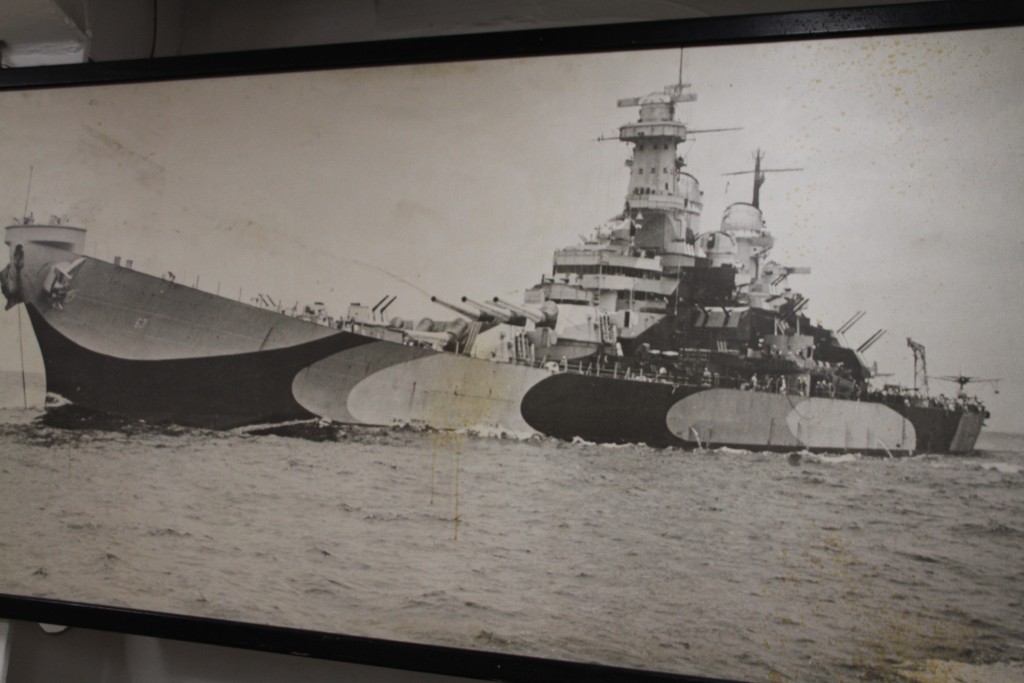 On one of the tables, we saw this classic book that was once read by sailors.
On one of the tables, we saw this classic book that was once read by sailors.
The ship is nearly three football fields long. There are nine 16 inch guns that could shoot 2,700 pound shell 20 miles out to sea.
There were a number of docents who freely gave of themselves telling the story of Mighty-Mo.
The ship fought in such famous battles as Iwo Jima and Okinawa. “Mighty-Mo” is most remembered, though, for being the place where the Japanese surrendered in Tokyo Bay on September 2nd 1945—the official end of WWII. There is a disc where the exact spot of the surrender took place.
On the top of the bridge, we spotted a small Navy craft. On the other side, we saw what appeared to be a Navy floating observatory.

On the ship that day on September 2nd 1945, was Fleet Admiral Chester Nimitz and the General of the Army Douglas MacArthur to accept the Japanese surrender.
With them was a 31 star American flag that was from Commodore Mathew Perry brought to Tokyo Bay in 1853.
In our 2017 visit to Sioux Falls, SD, there is a memorial to the USS South Dakota, aka Battleship X.
There is still an ongoing controversy that the USS South Dakota should have been given the honor of the Japanese surrender. The ship saw more combat than the Missouri.
The USS Missouri, though, was larger. Then, too, the Missouri was from the same state as President Truman was from. The ship was christened by Truman’s daughter in early 1944.
In our 2015 visit to the “Pacific Aviation Museum,” you can take a bus from Mighty MO or from the main Pearl Harbor pavilion. The name to this fine museum has since changed to “The Pearl Harbor Aviation Museum.” It is well worth the $25 ticket cost if you have time and energy to explore the famous Hanger 37 and my favorite hanger, 79.
The museum has about 50 planes to view. We were amazed to learn of the story of Roy A Vitousek and his son who got caught in the mayhem. The plane and themselves survived to tell the story.
Inside Hanger 37, there was a Mitchel B-25 bomber. The same type of bomber that was used on a raid over Tokyo in April of 1942.
When the war looked bleak for the USA, an ingenious plan was drawn up to launch bombers off of Japan on the USS Hornet, air-craft carrier.
The raid was a complete surprise. Fifteen bombers, though, were destroyed. Jimmy Doolittle, leader of the raid, bailed out over China and survived. Of the 80 crew members, 77 members did live for another day. Jimmy later received the Medal of Honor and promoted to General status. He lived to the age of 96.
Little known to the American public, though, the Japanese reprisals for the raid caused the death of 250,000 civilians and 70,000 Chinese soldiers. The Japanese were ruthless.
The 158 foot tower was in such movies as “Tora, Tora, Tora,” and “Pearl Harbor.” At this time, the structure inside is getting remodeled.
The airfield was attacked by the Japanese. This was the place where Amelia Earhart crashed in 1937.
In 1935, Amelia was the first women to fly from Hawaii to California. She is well known, though, for the “Lost Flight” as she and co-pilot, Frederick Noonan, were never seen again. Finding the plane and what happened to them has become an obsession for many.
In the museum, we were helped by an extremely informed docent, Vic Bonfiglio, known in some circles as aka “you little man, halt.” This docent has quite an interesting life and retired as a Colonel in the US Air Force. We found him on Goggle.
One of my favorite planes is the one with the “Tiger teeth” –Curtiss P-40 Warhawk. The teeth represent the “Tiger shark”—a definite species in the Hawaiian waters and throughout the South Pacific.
Hanger 79 is extremely interesting also. In 2015, there was a legendary DC-3 known as the “Gooney Bird.”
My favorite plane, though, is the restoration of a B-17, known as the “Swamp Ghost.” The plane was ditched literally in a swamp in New Guinea in 1942.
The B-17 was known as “The Flying Fortress.” This plane could take plenty of punishment. It was a major instrument in both the European and Pacific theatre during WWII.
Answer to where the 2nd anchor is located? Obviously in the capital of Arizona, Phoenix. I tell people “Shake the hand, of the hand, that has touched both anchors of the USS Arizona.” We learned about this “second anchor” by watching a segment of the Amazing Race in 2004. Even though our visit was in early June, 2004, an egg could have been fried on the hood of our car. It is very quiet in downtown Phoenix on a Saturday.

